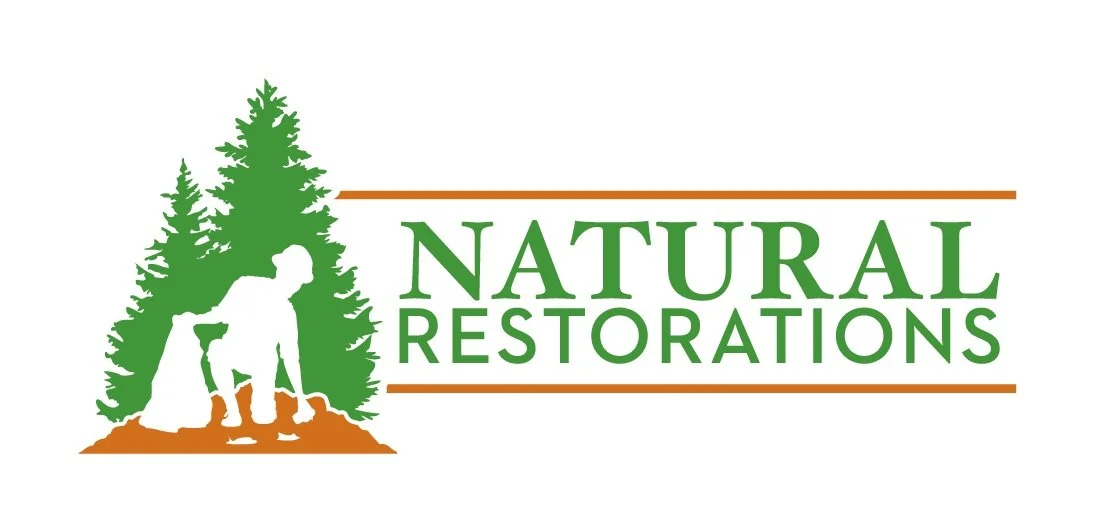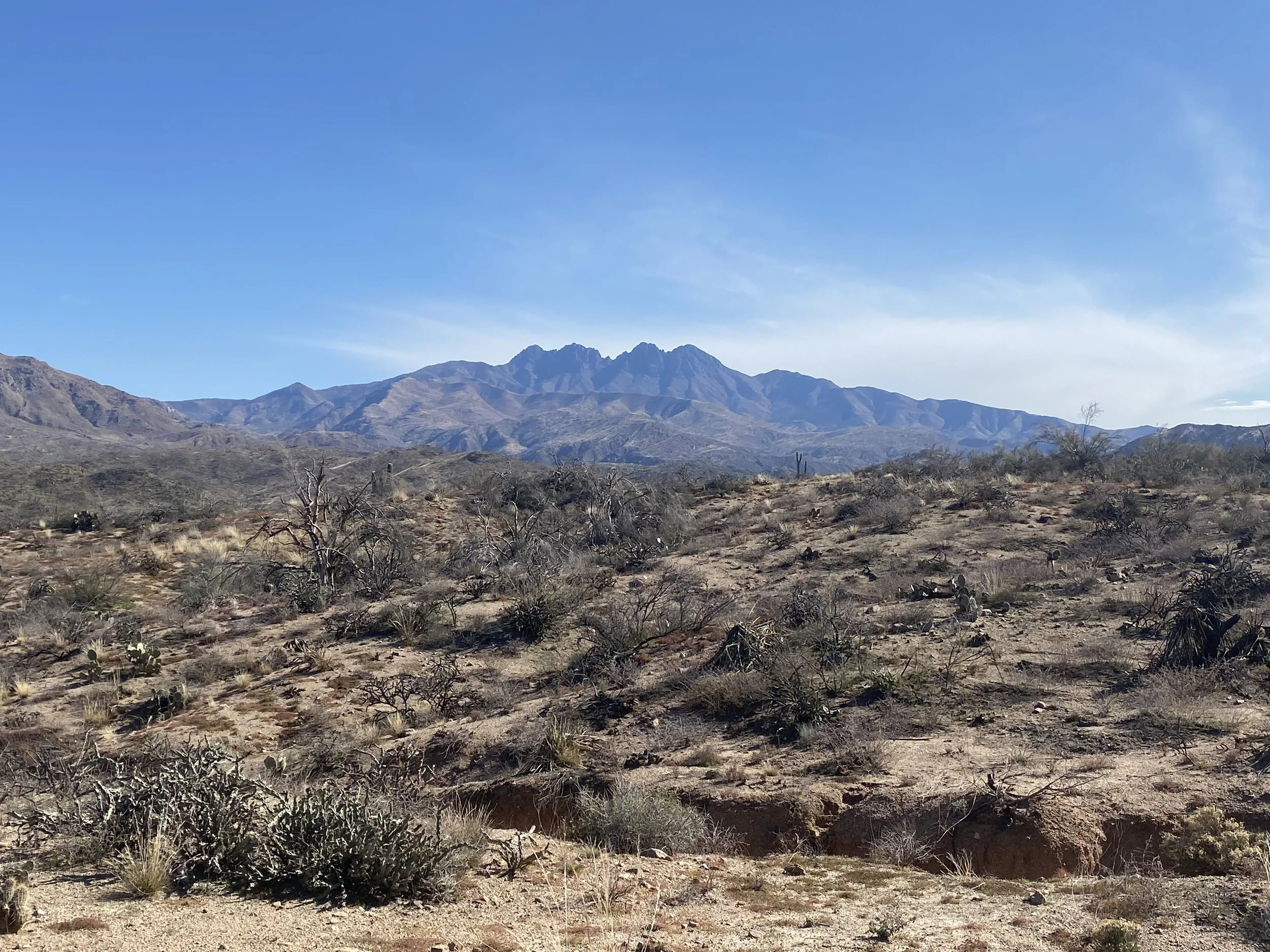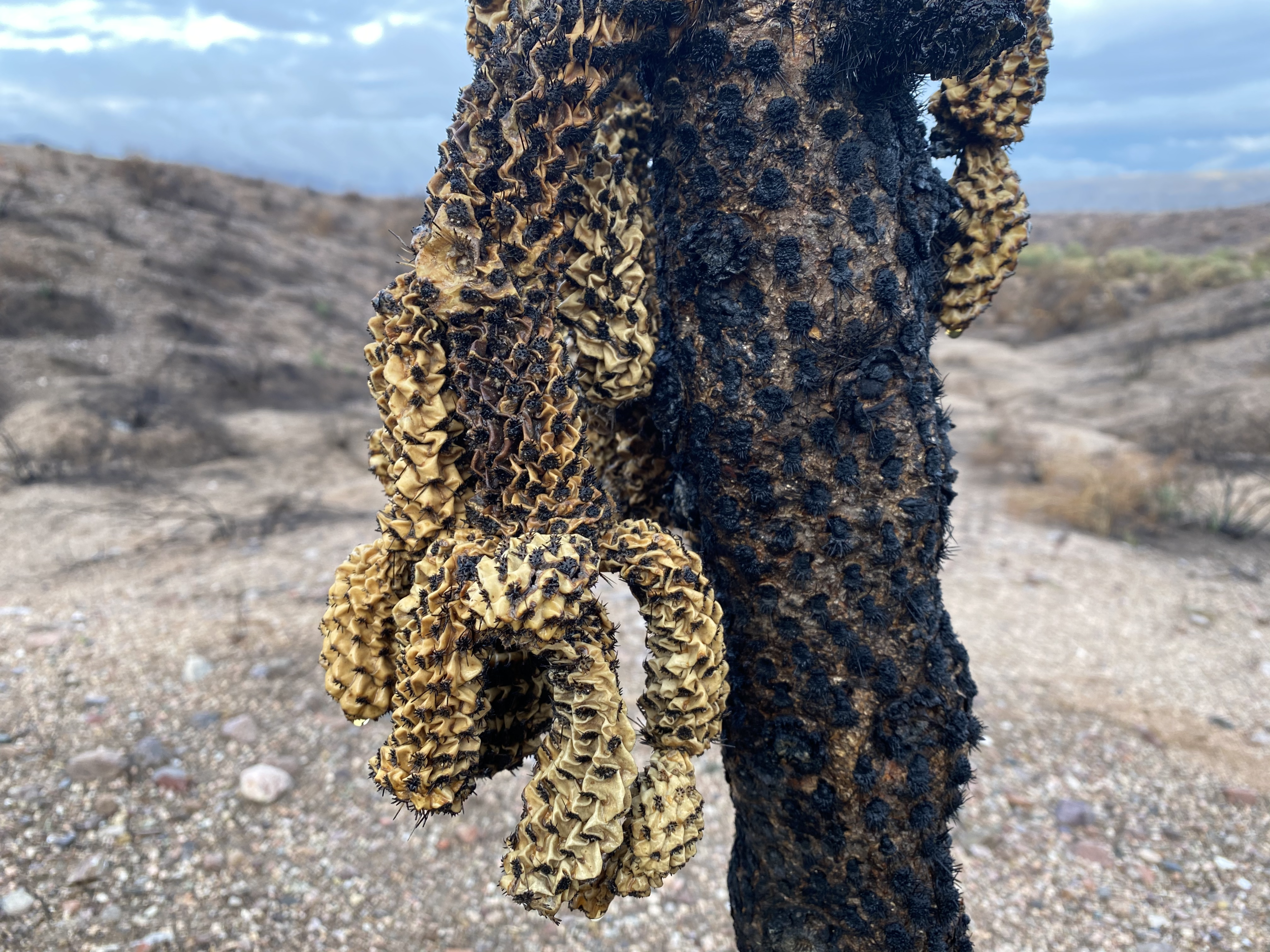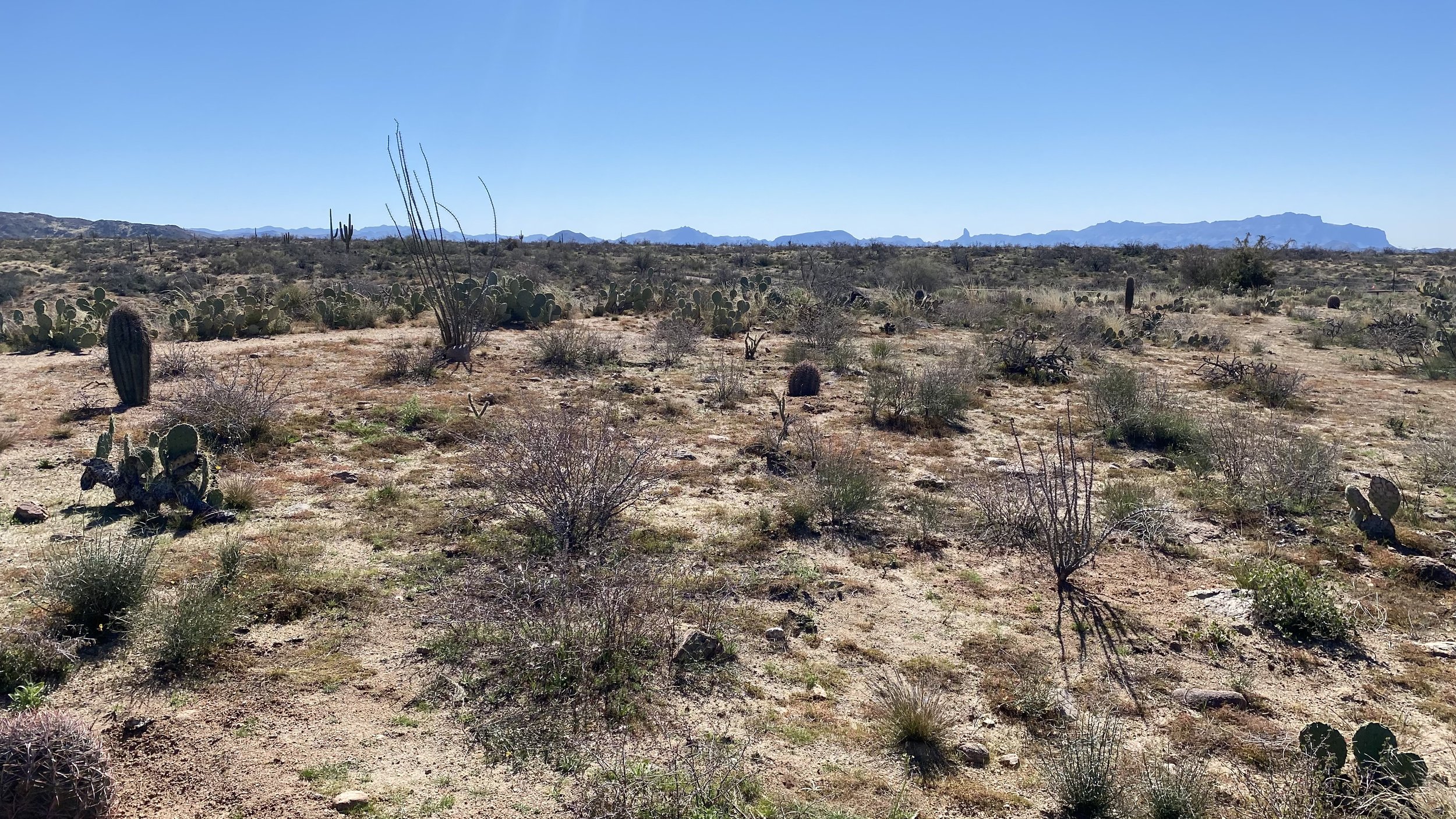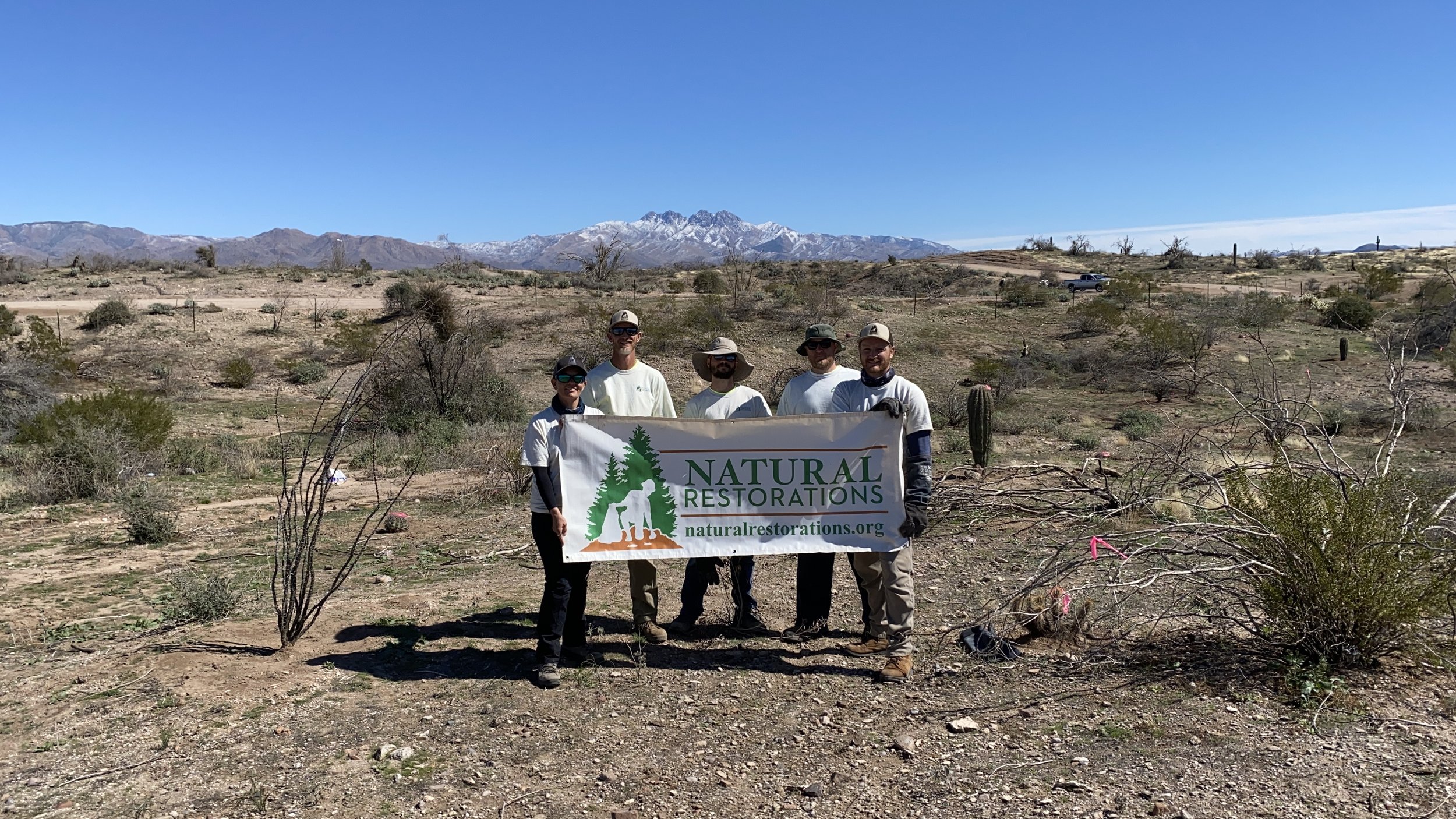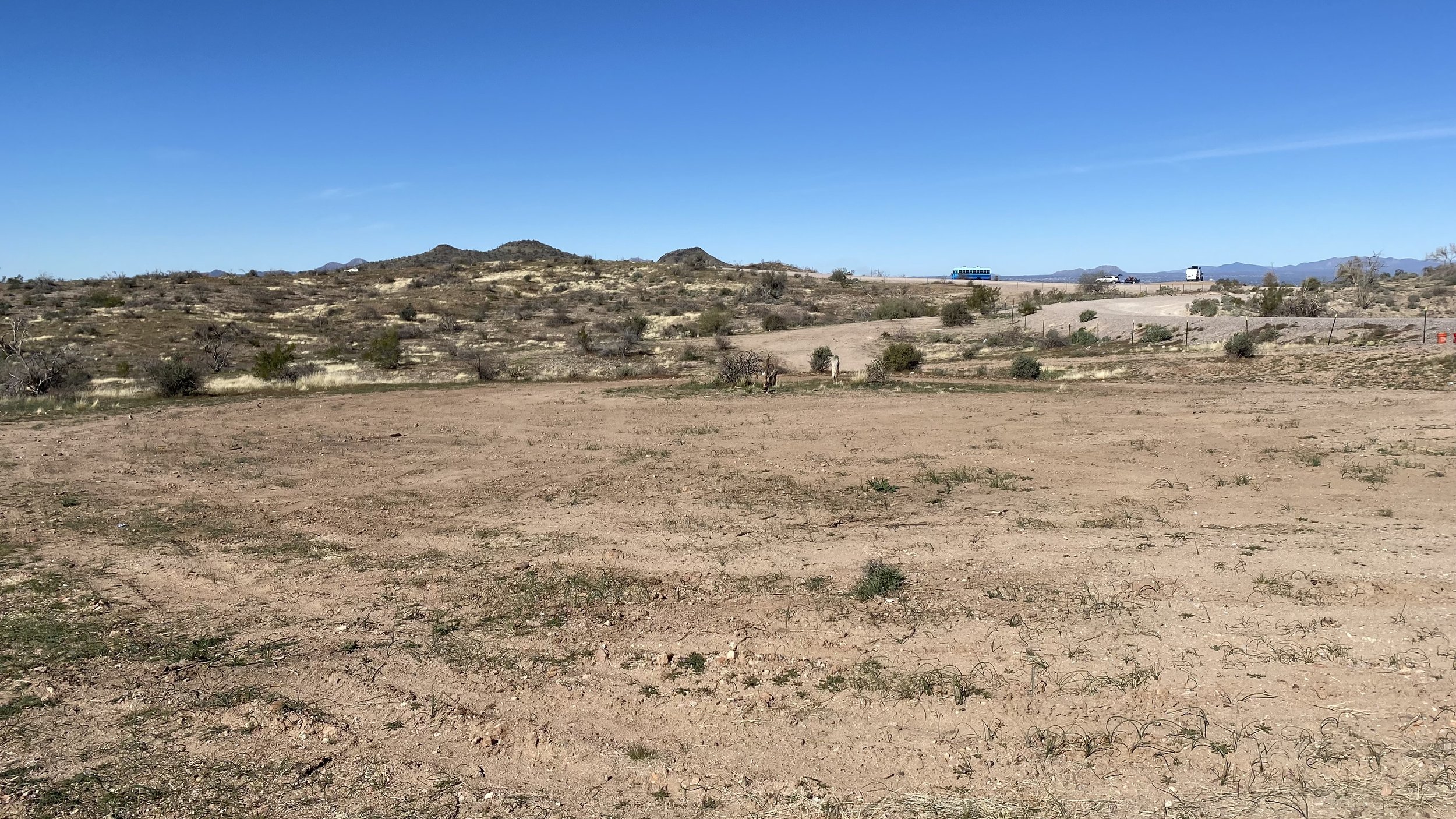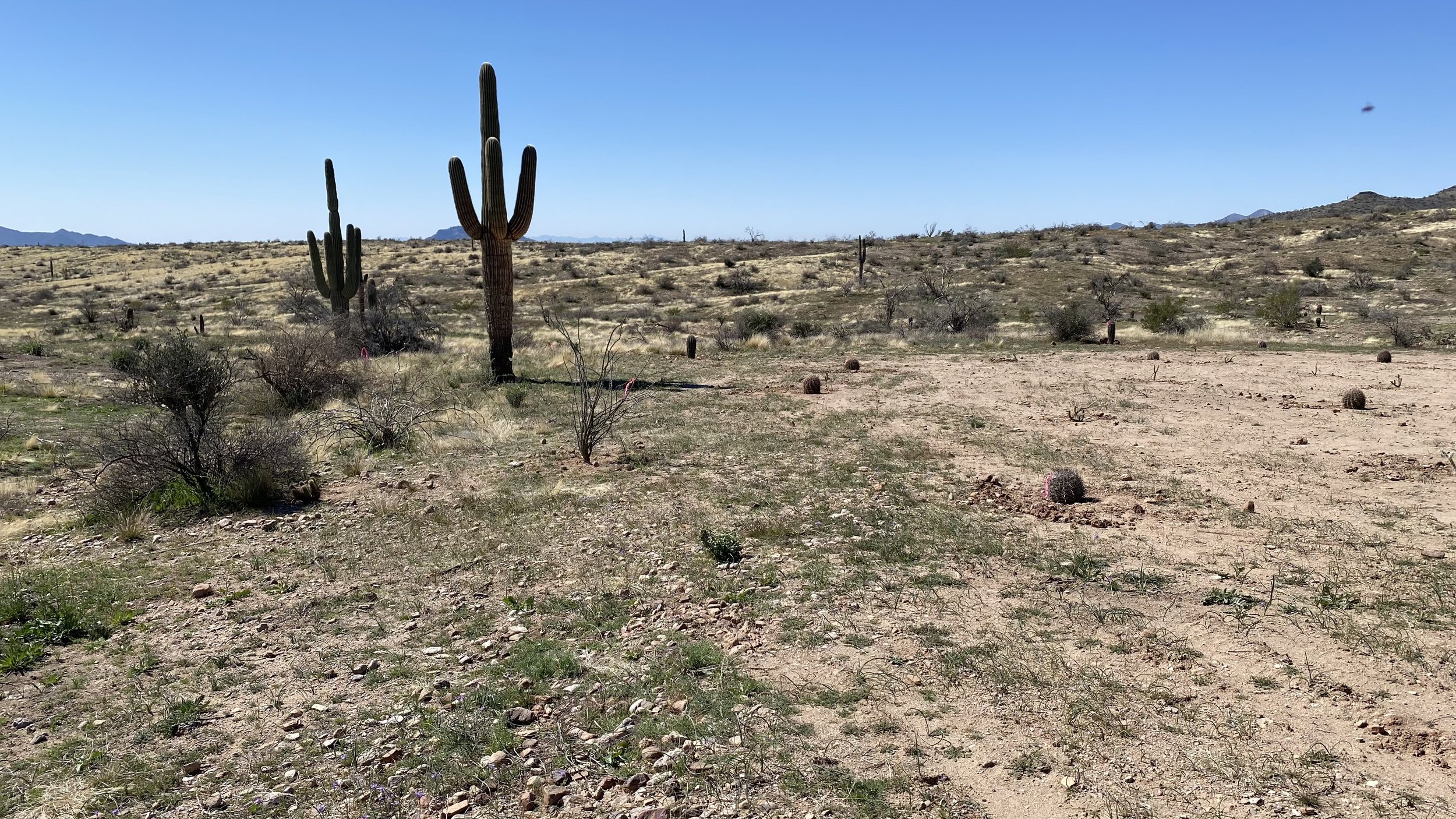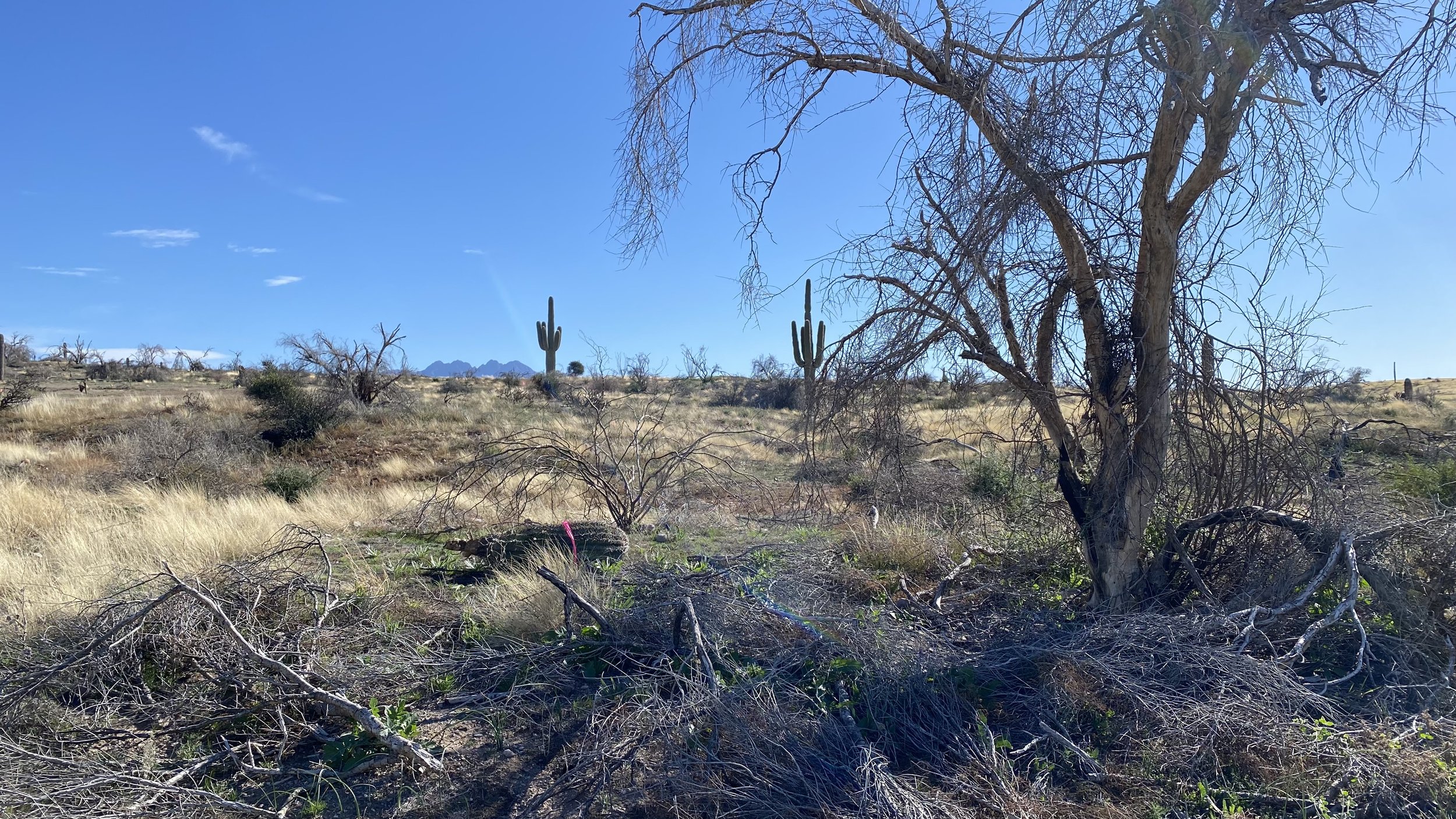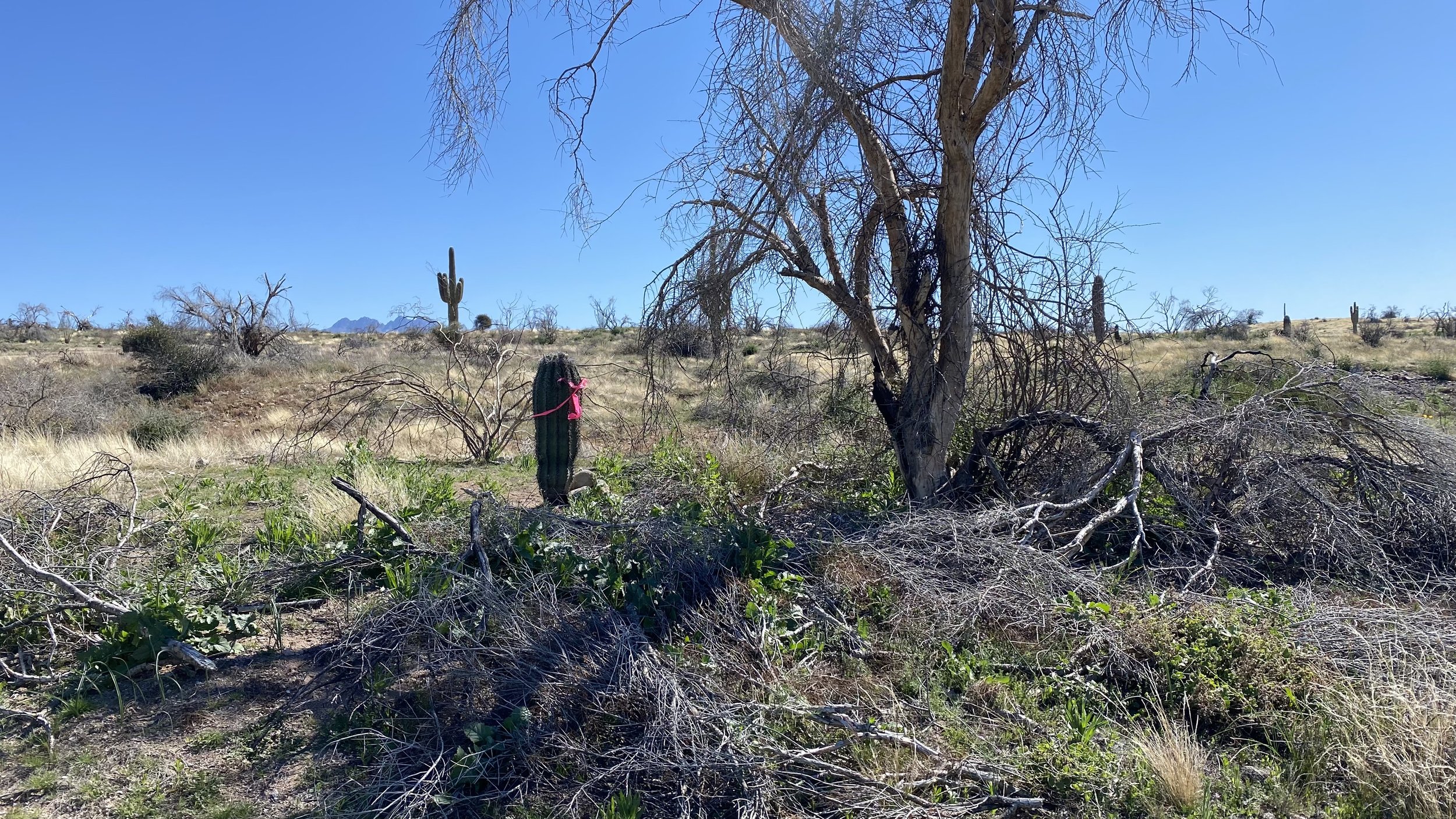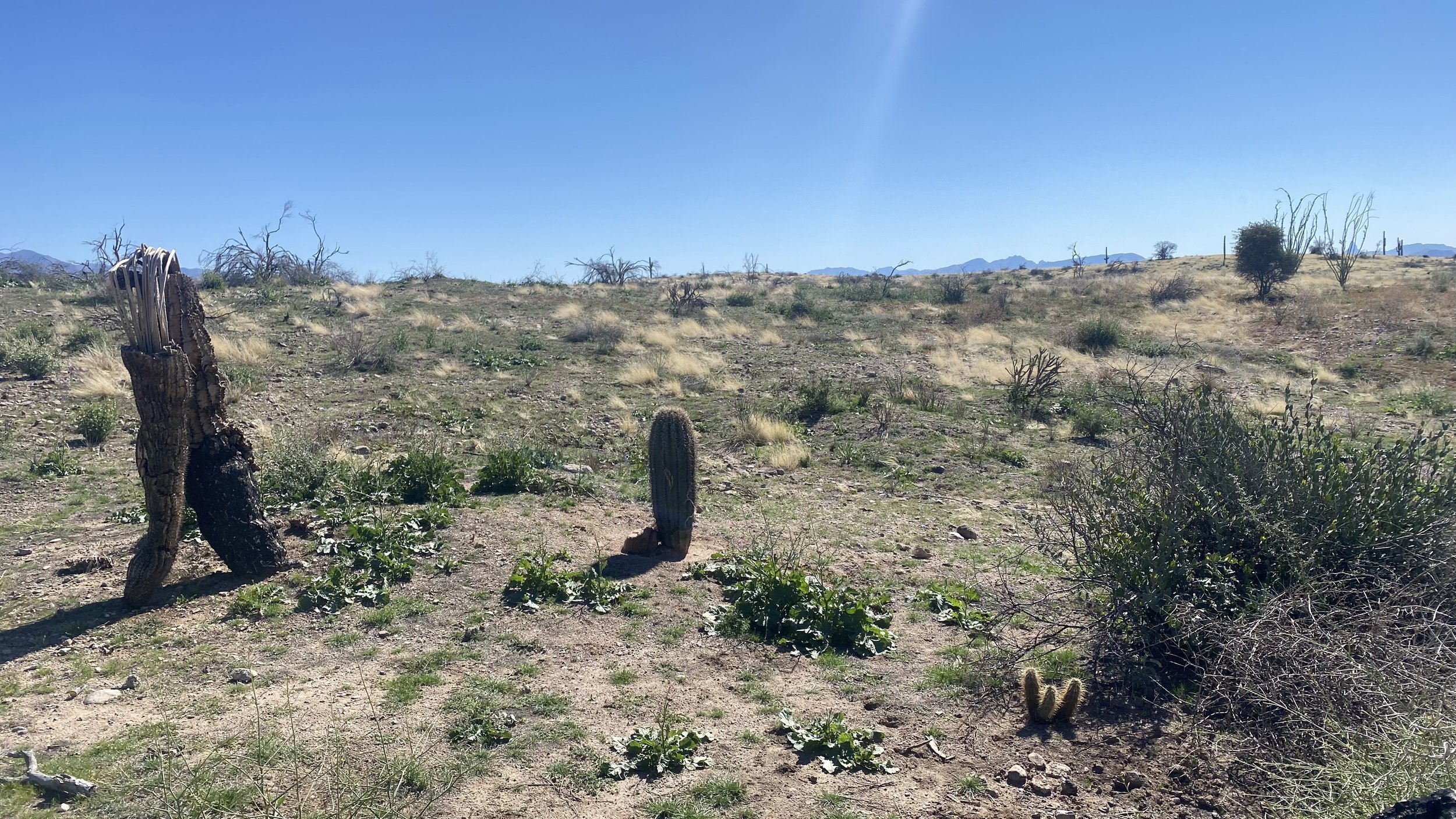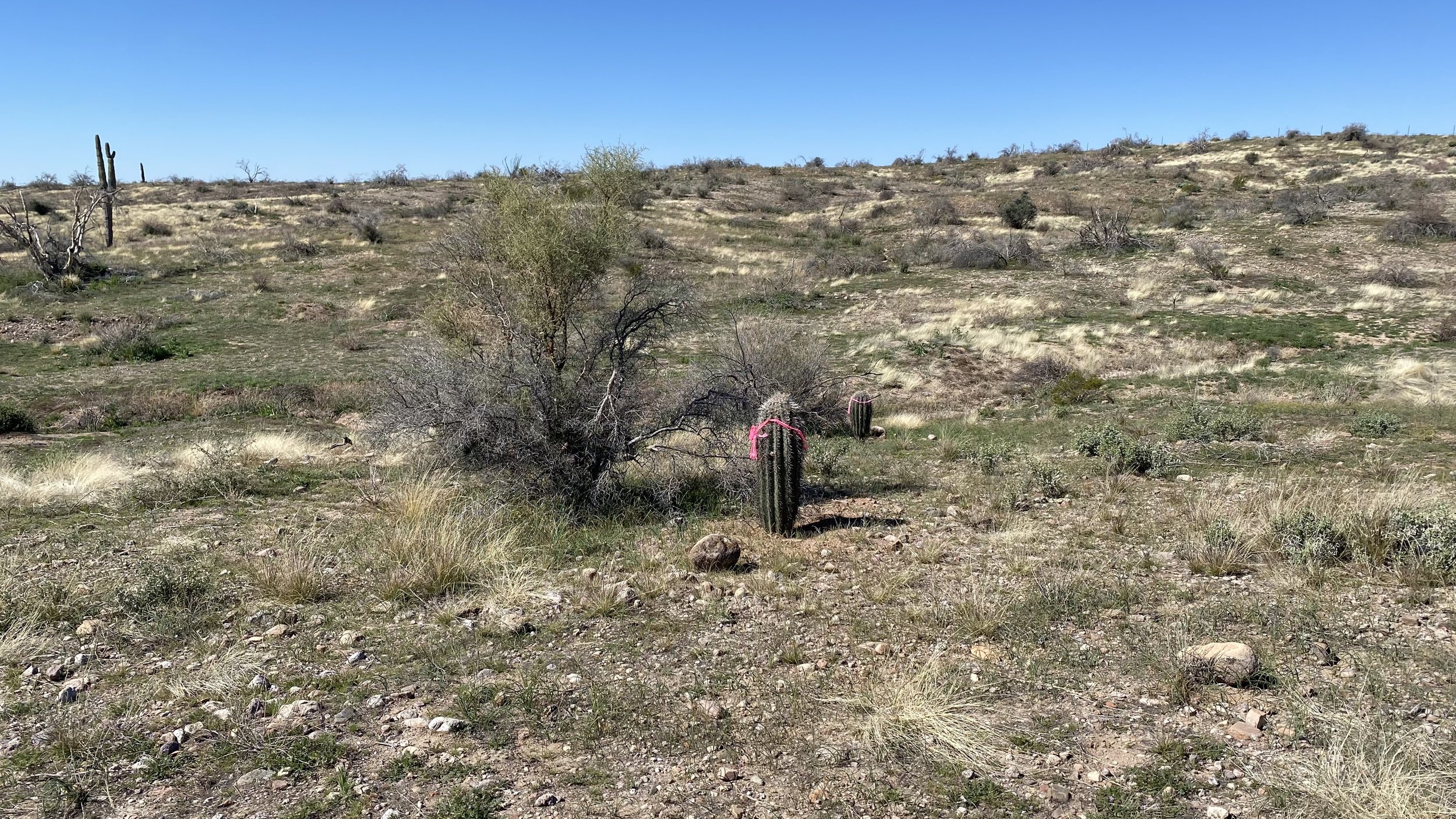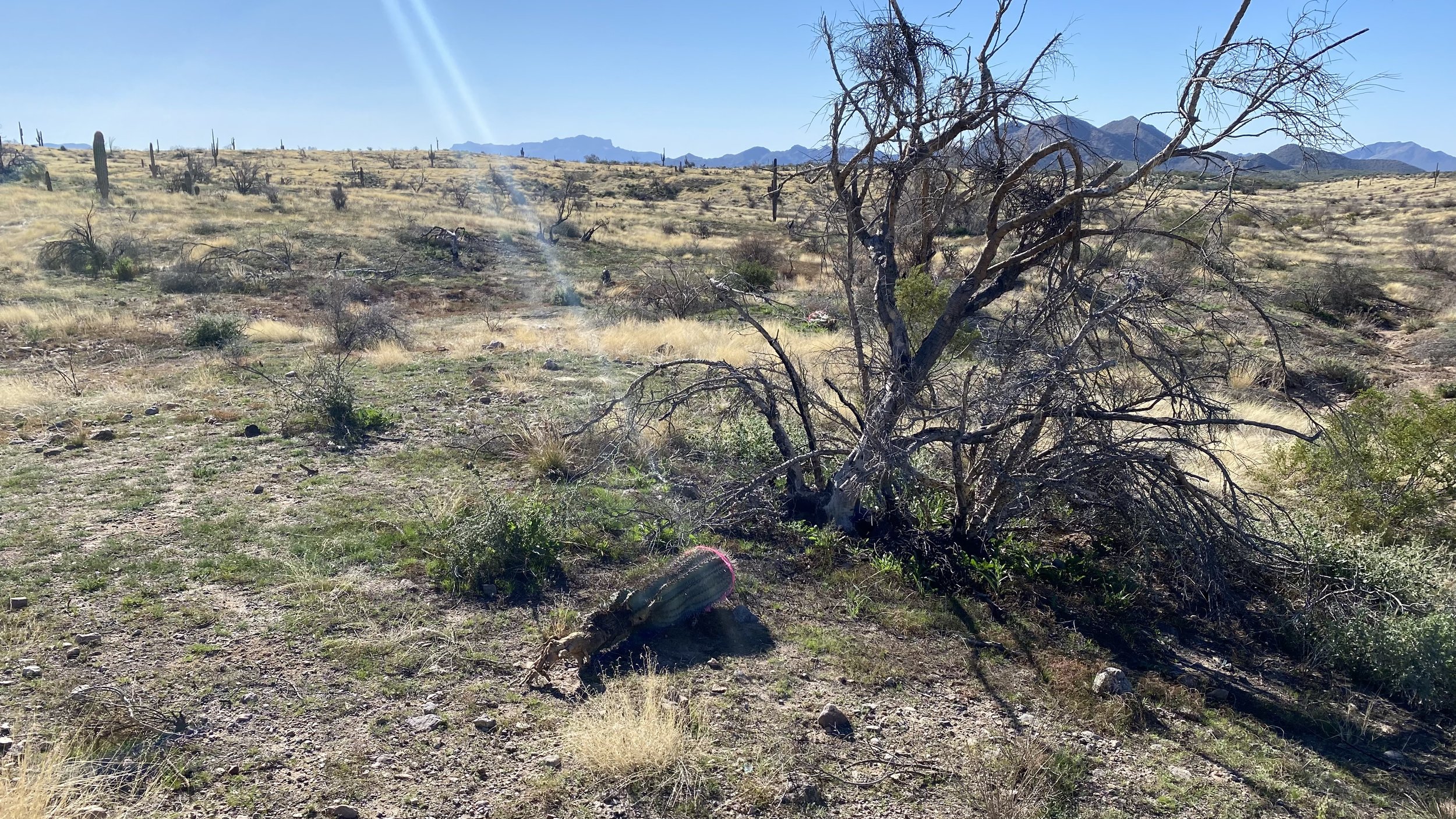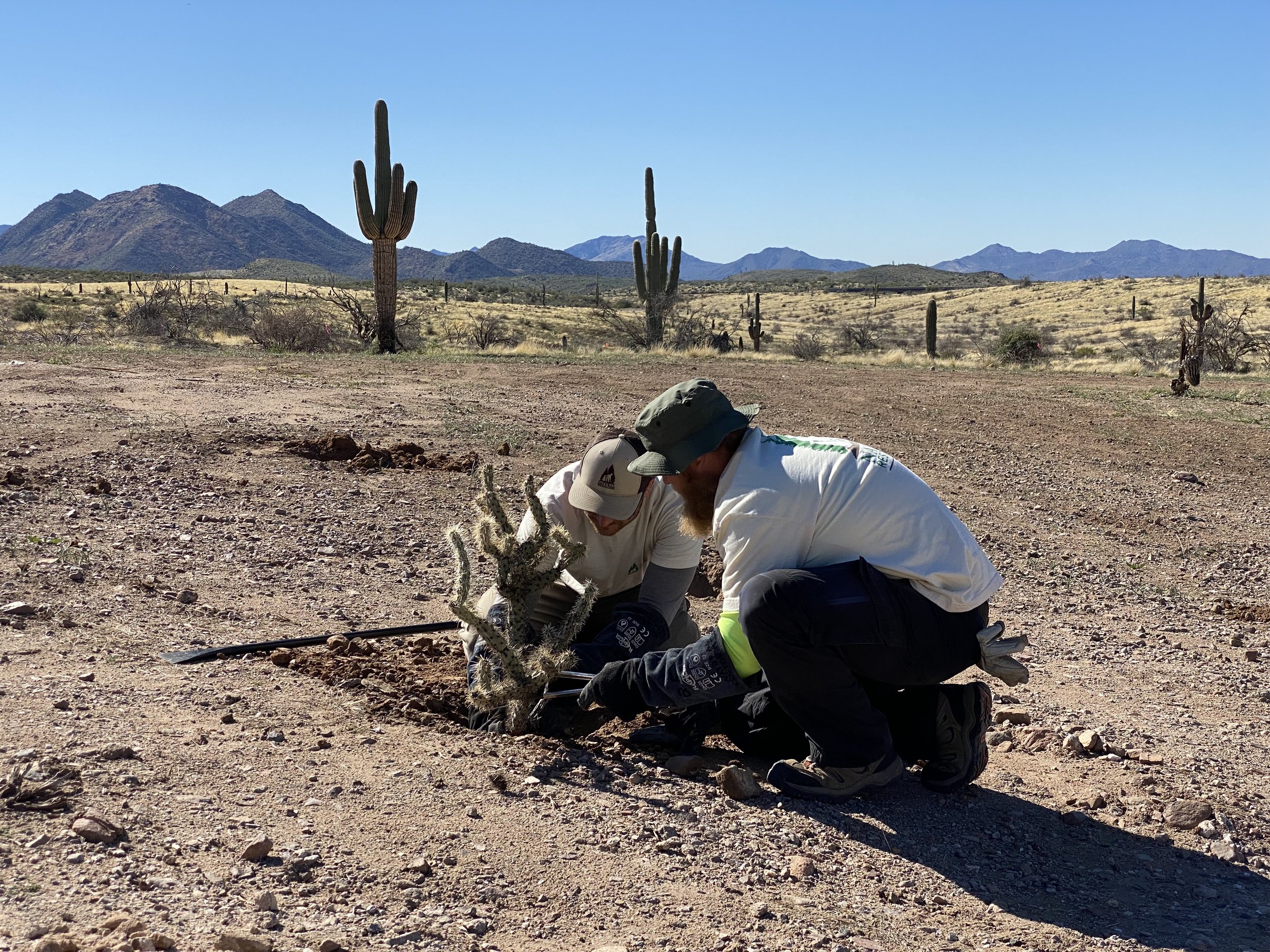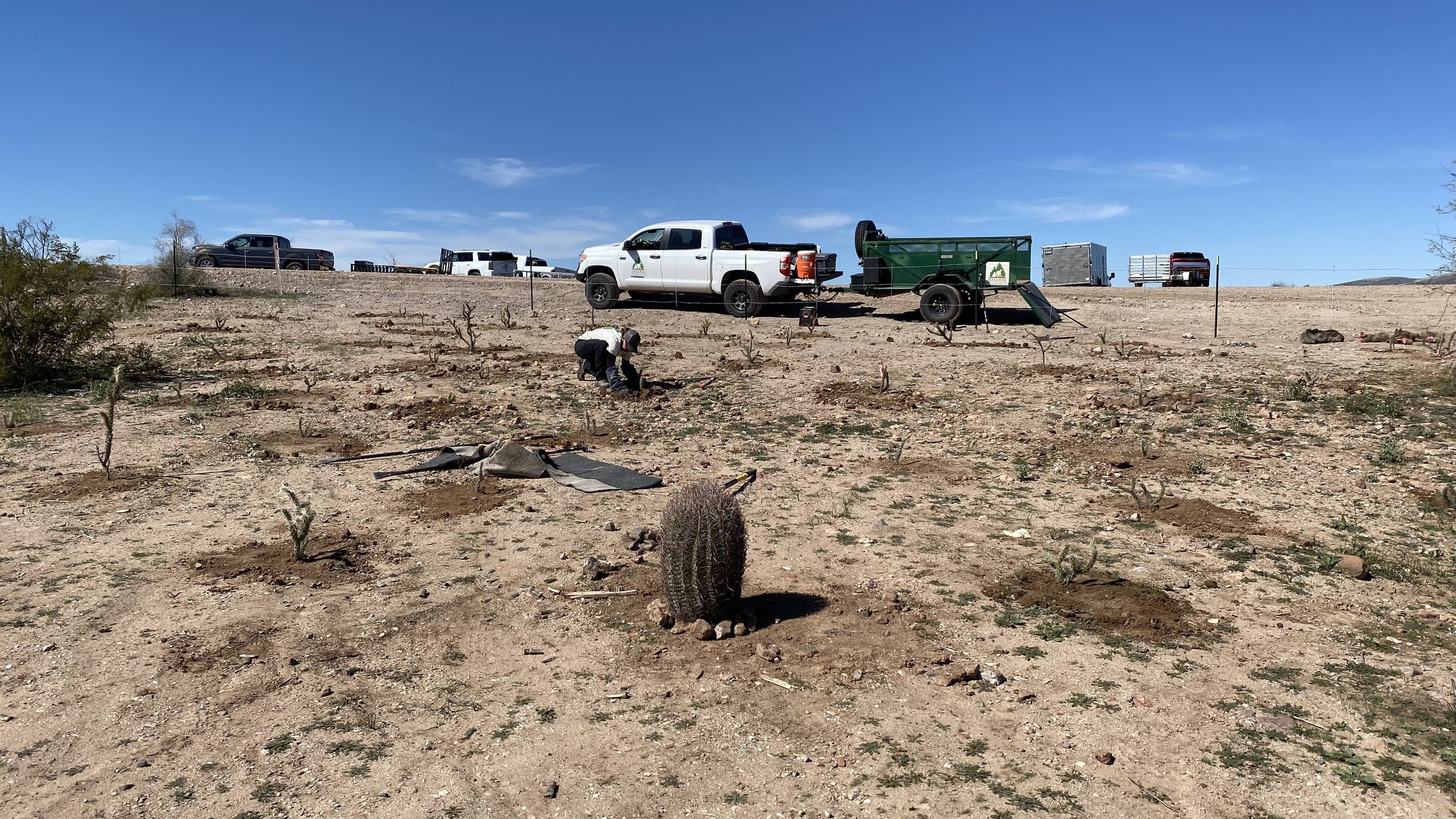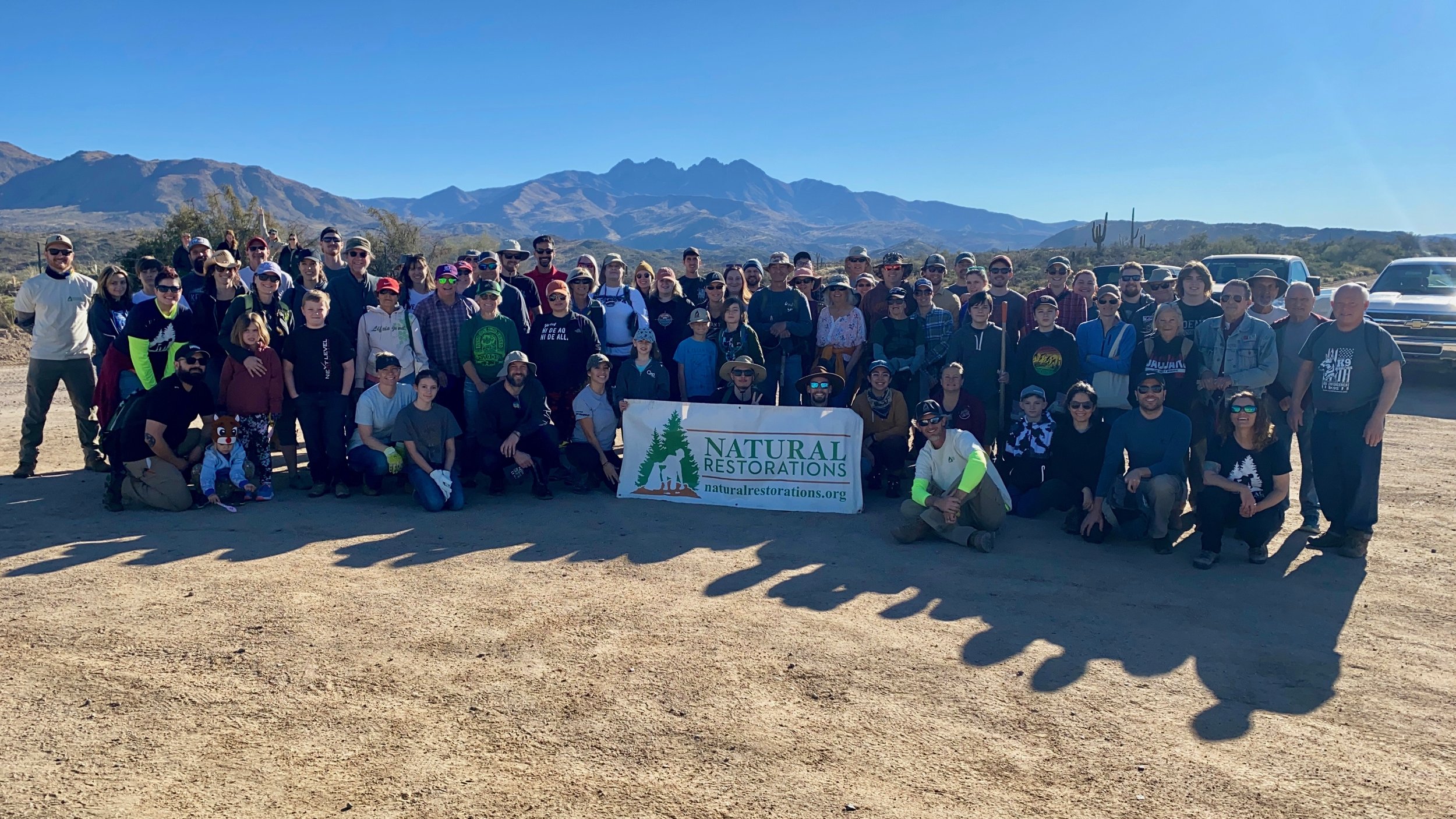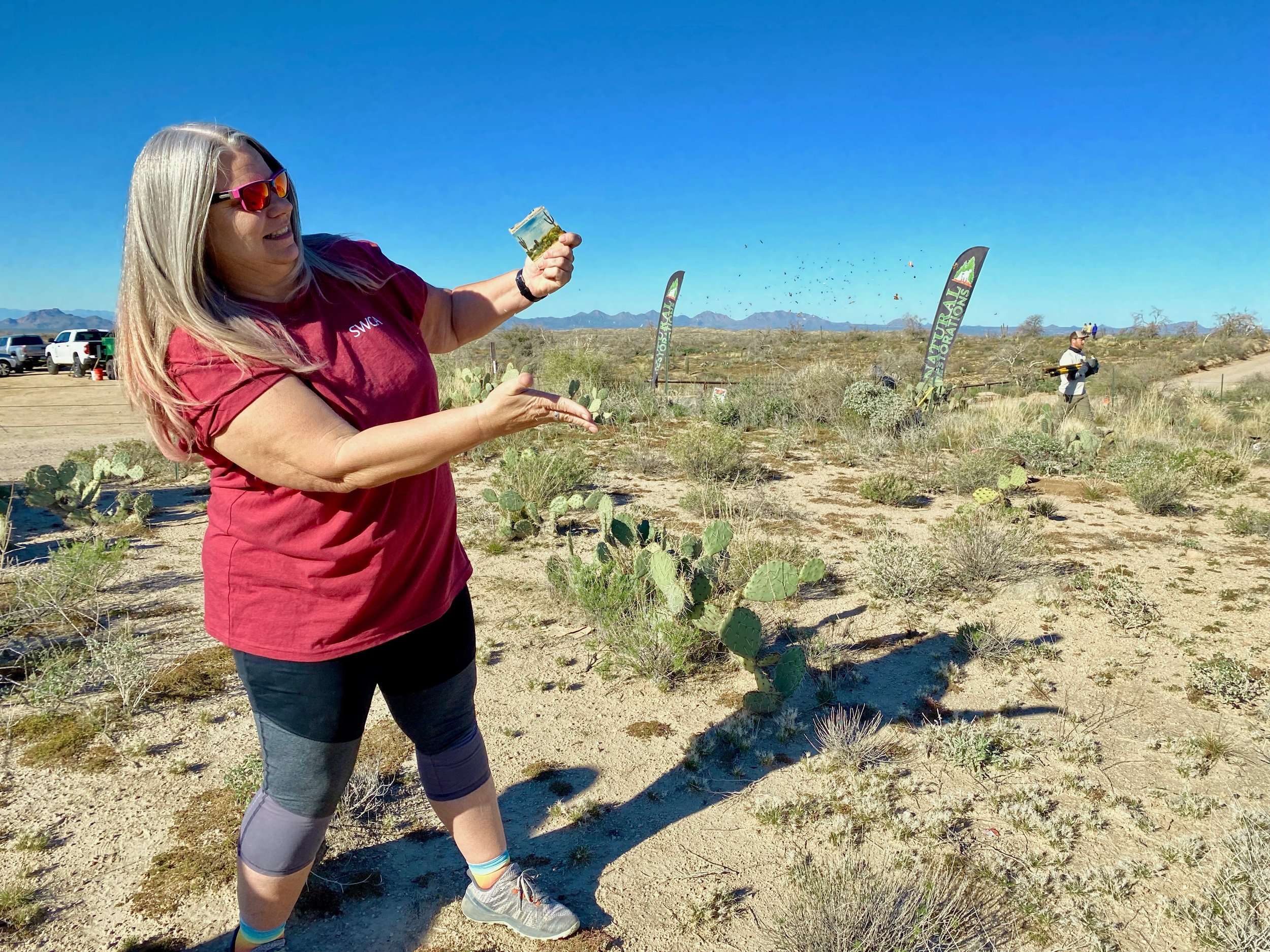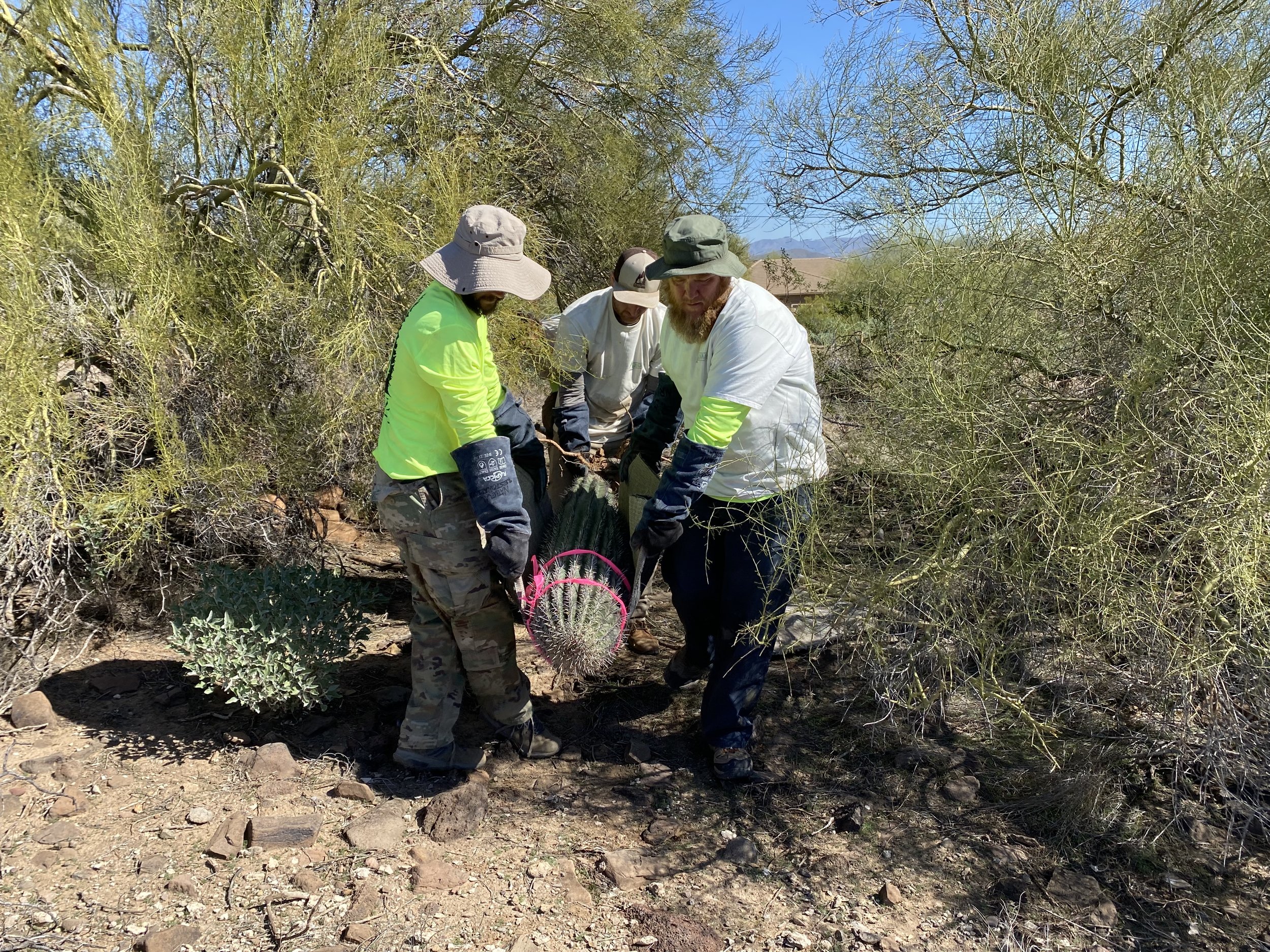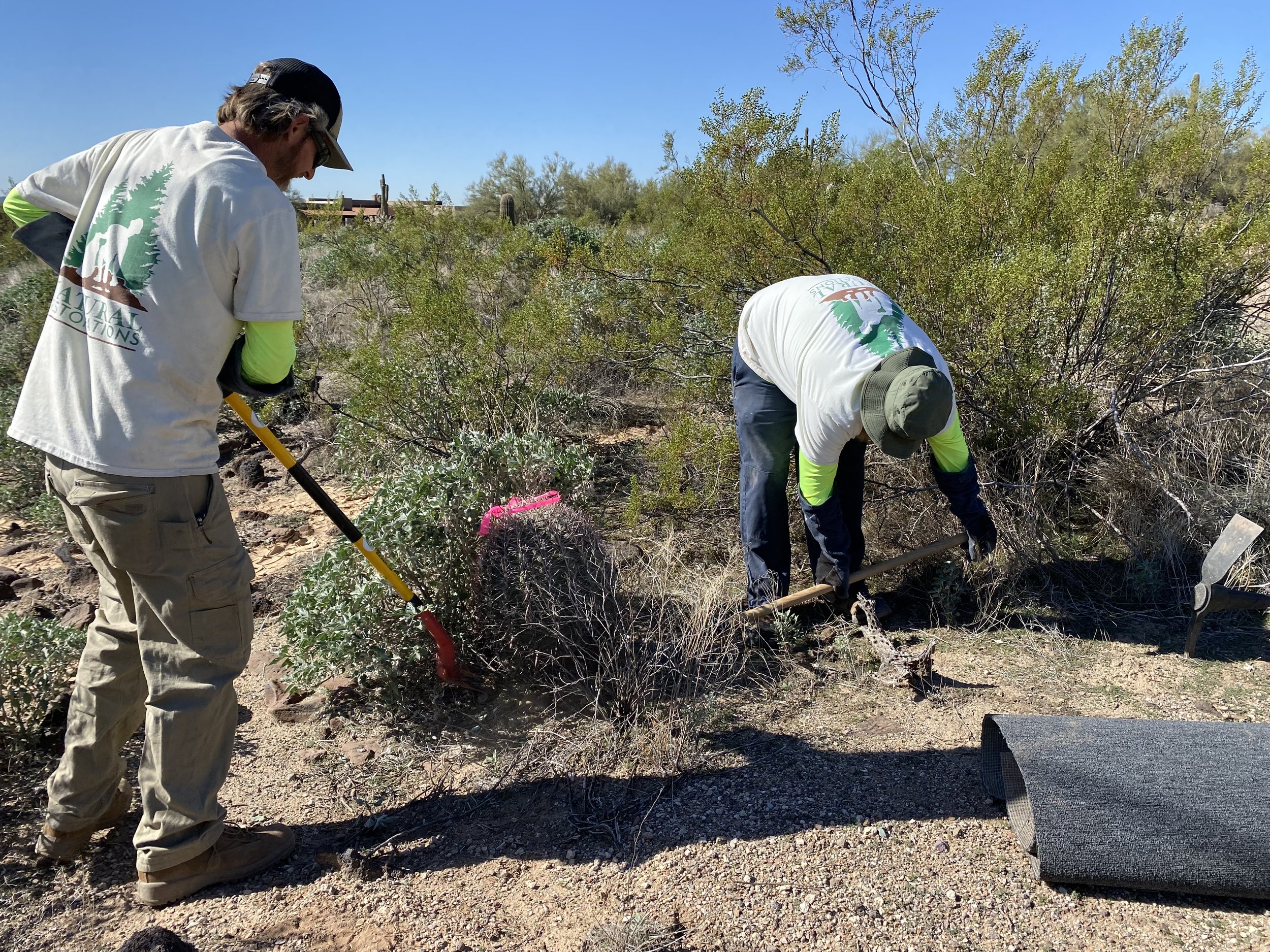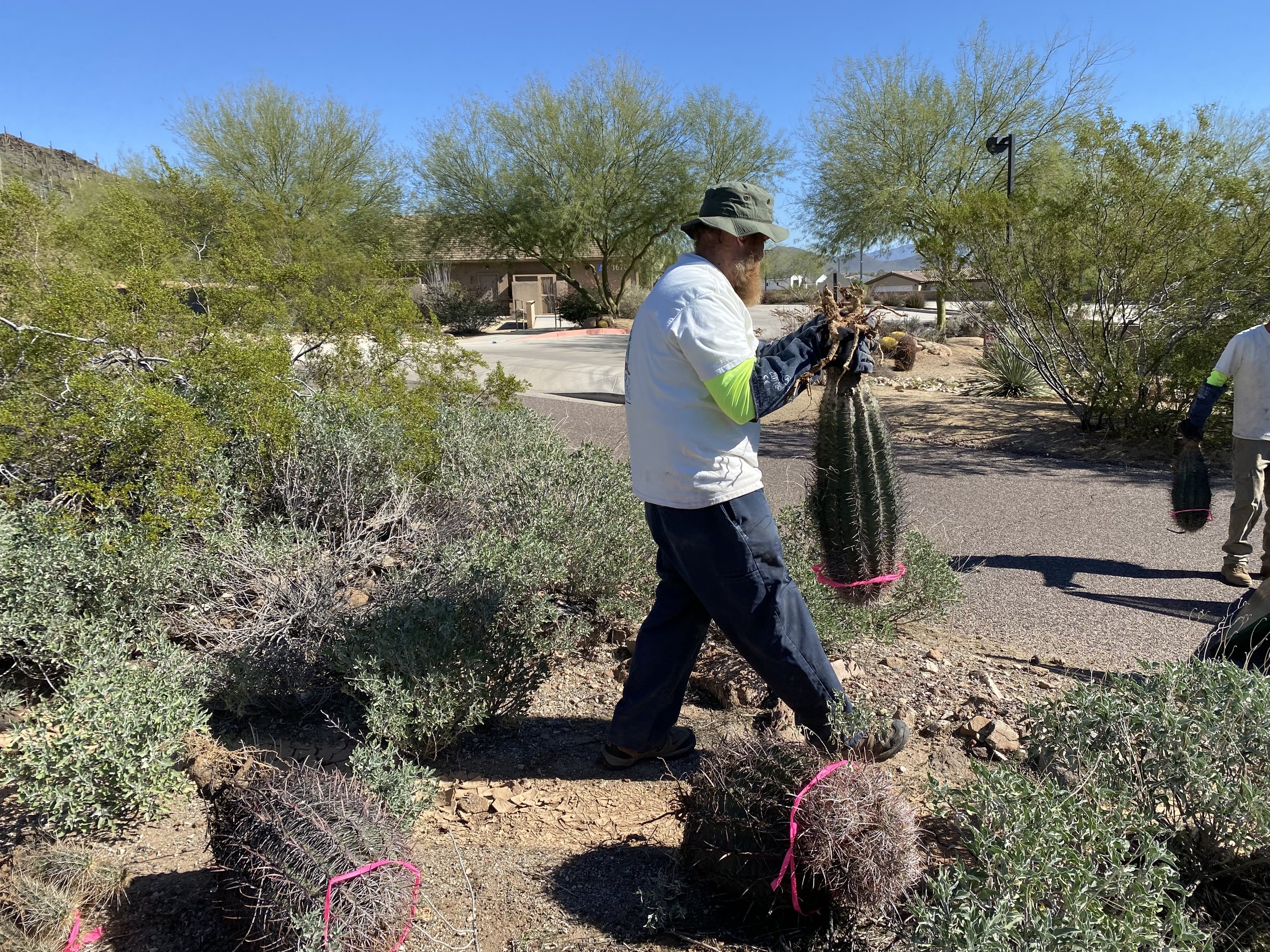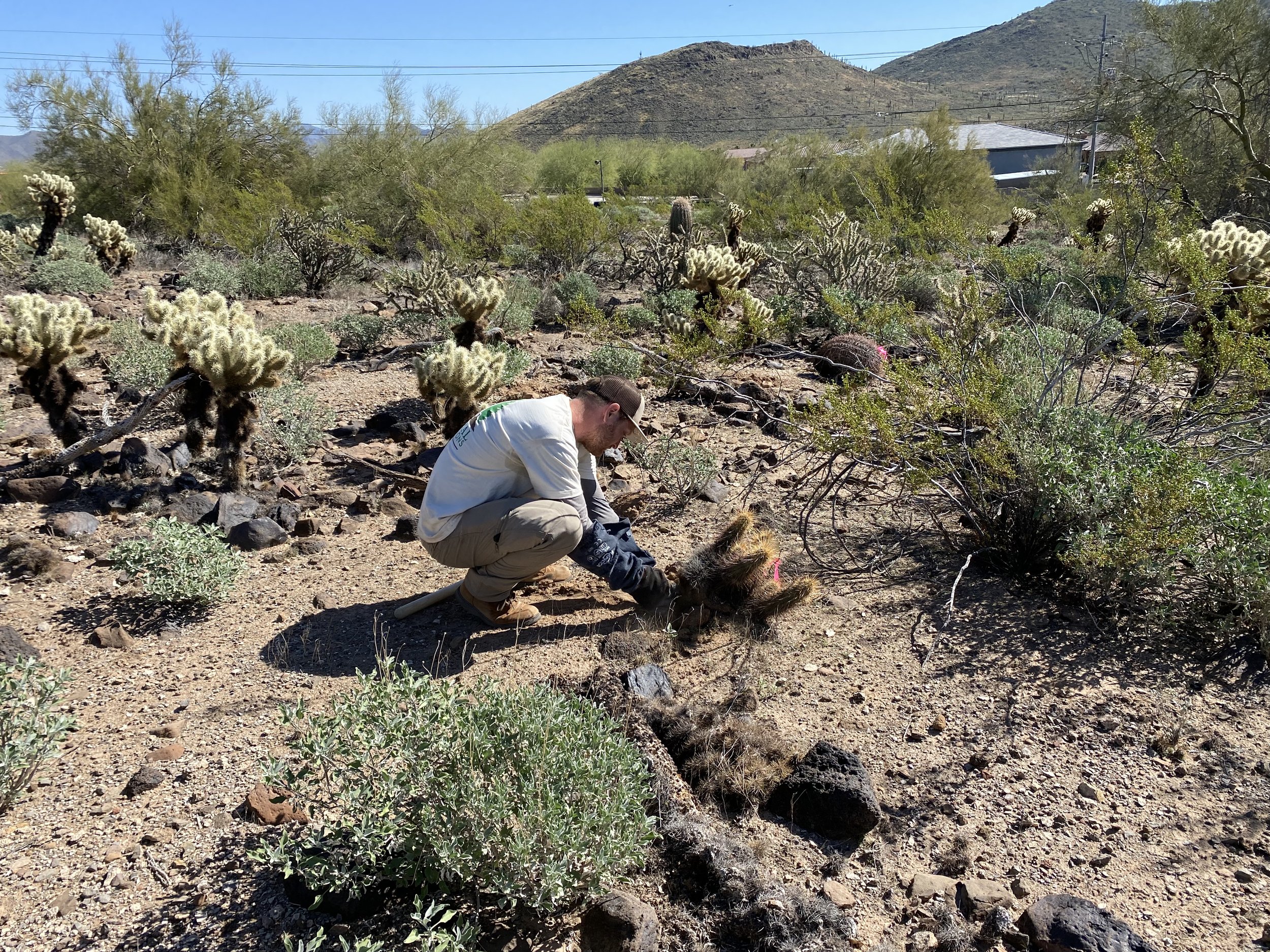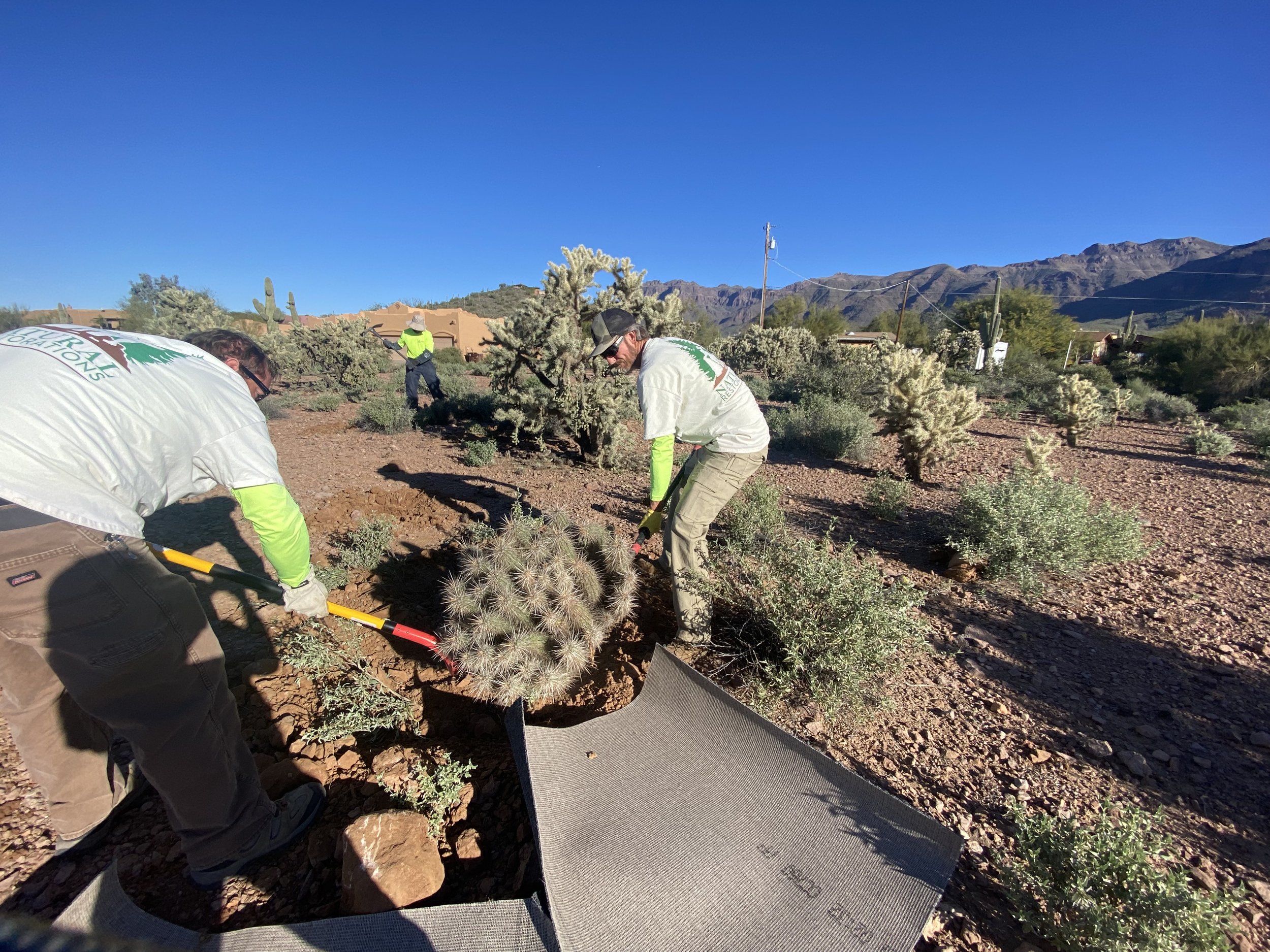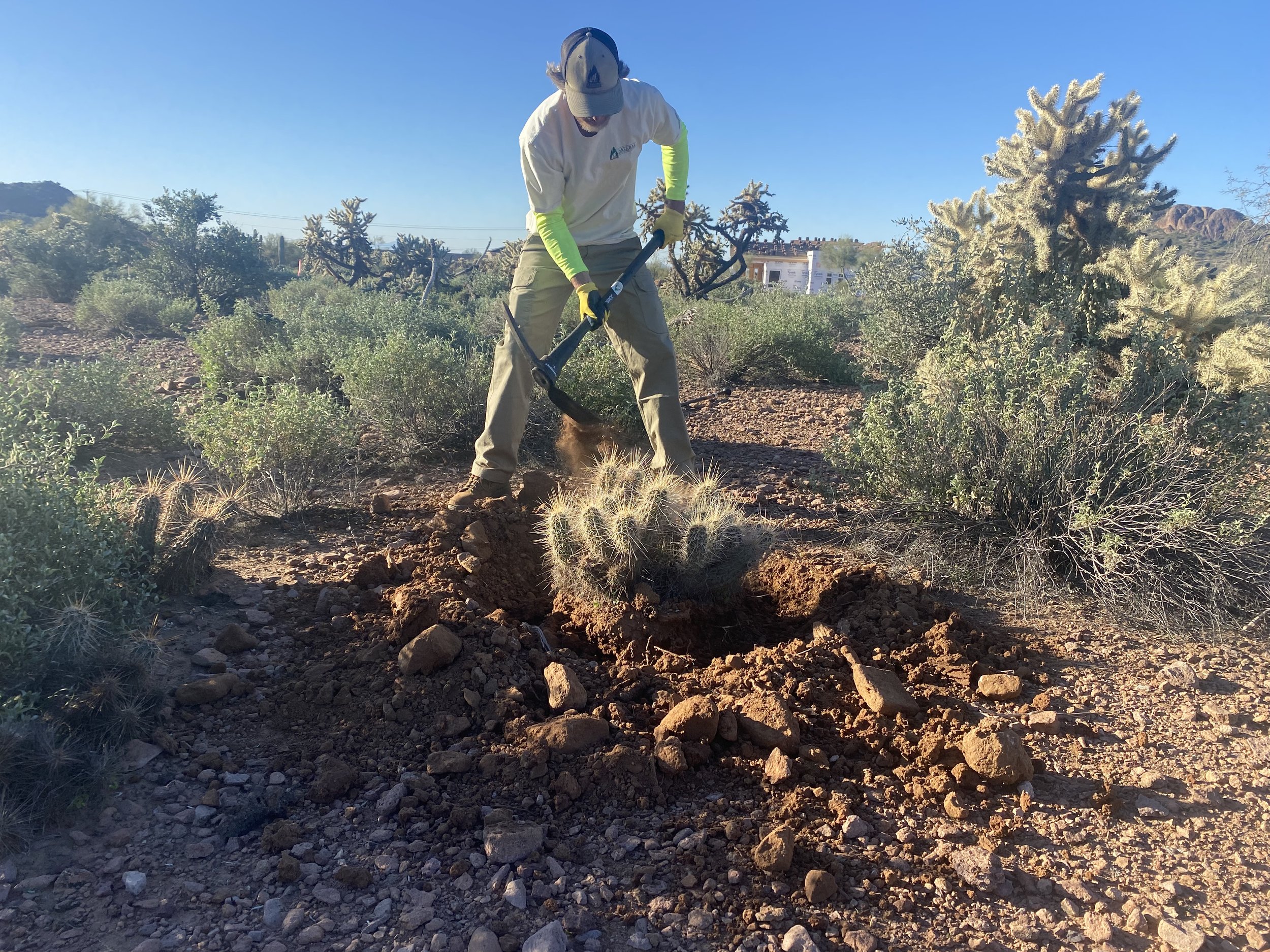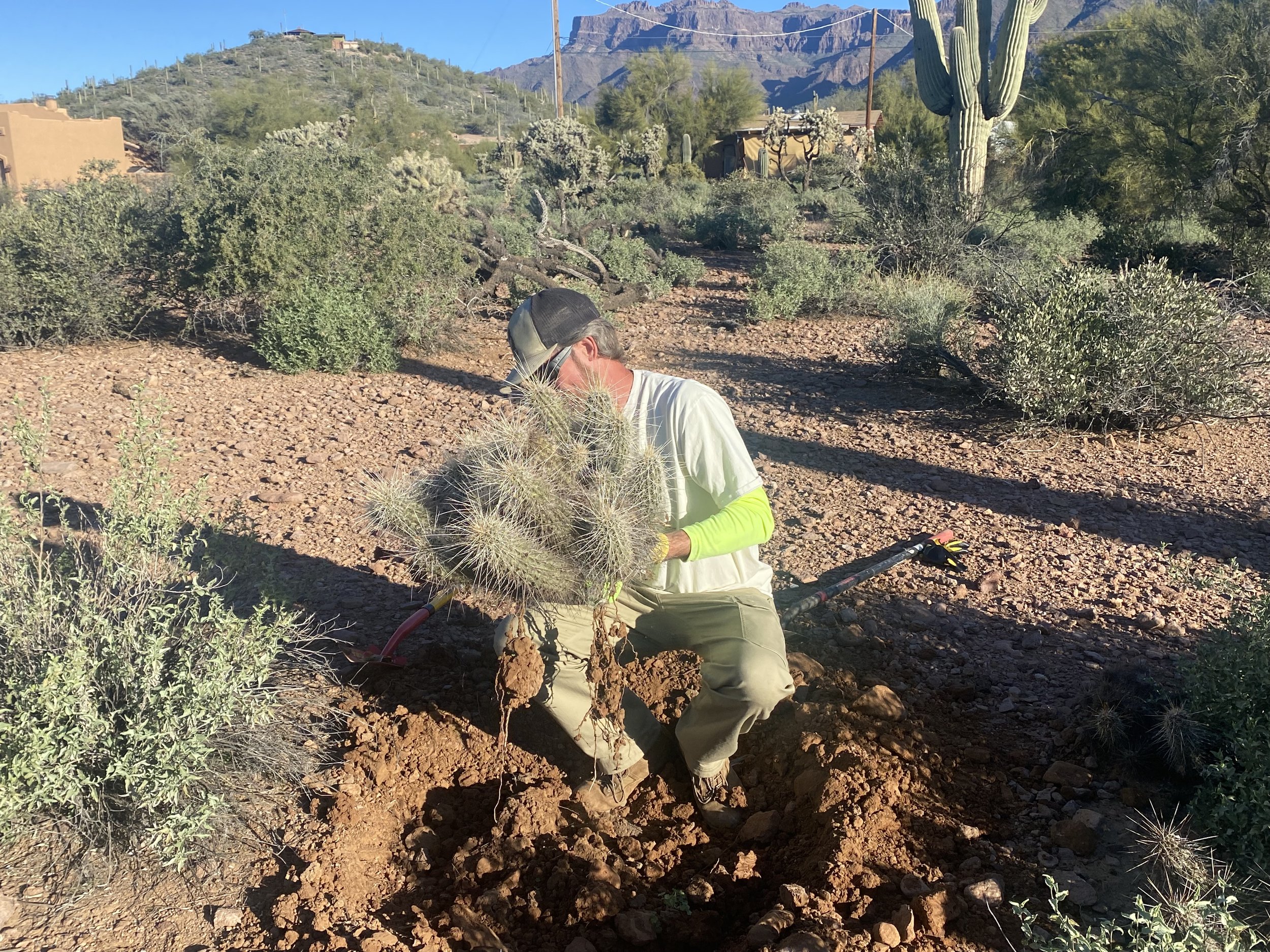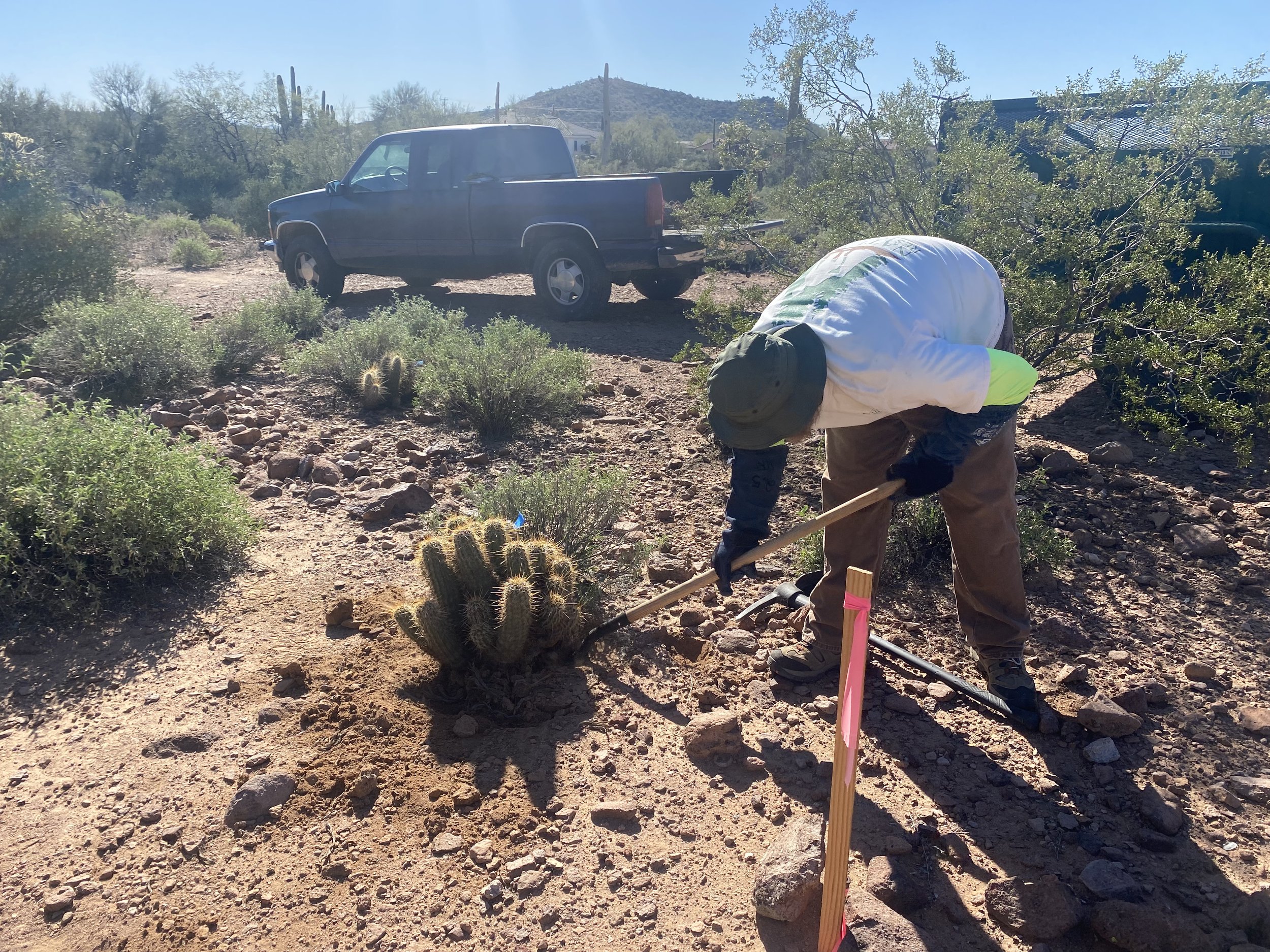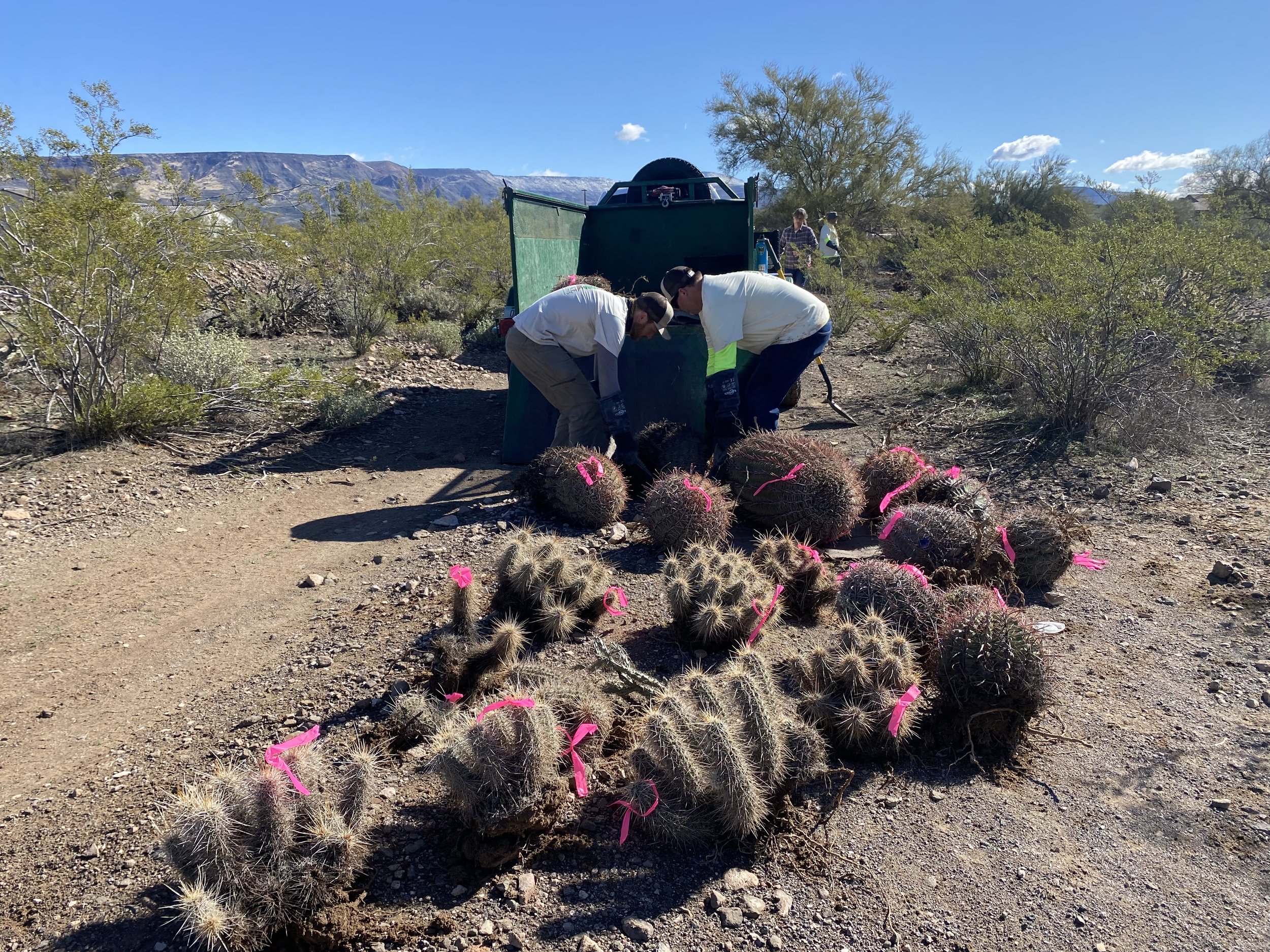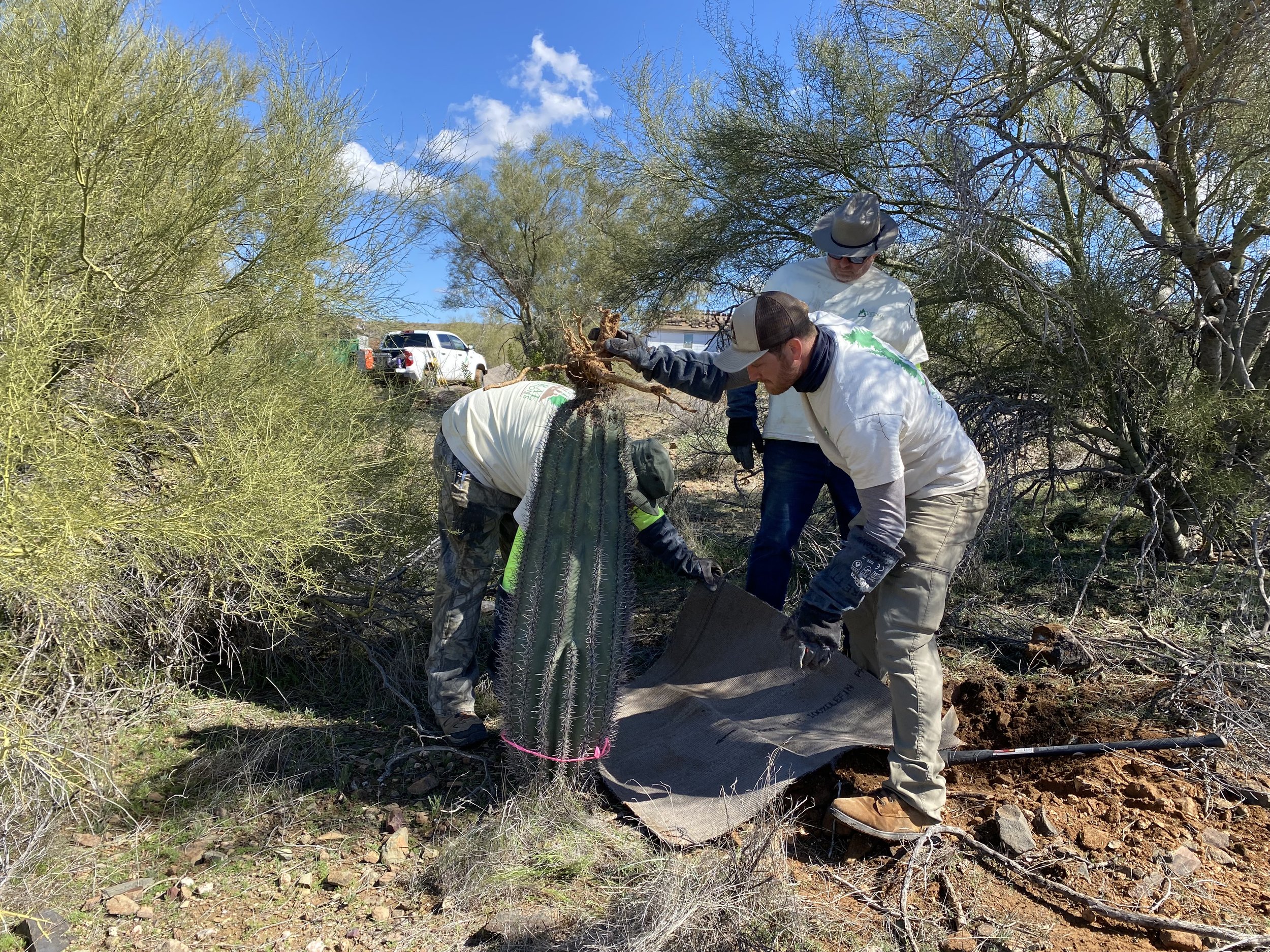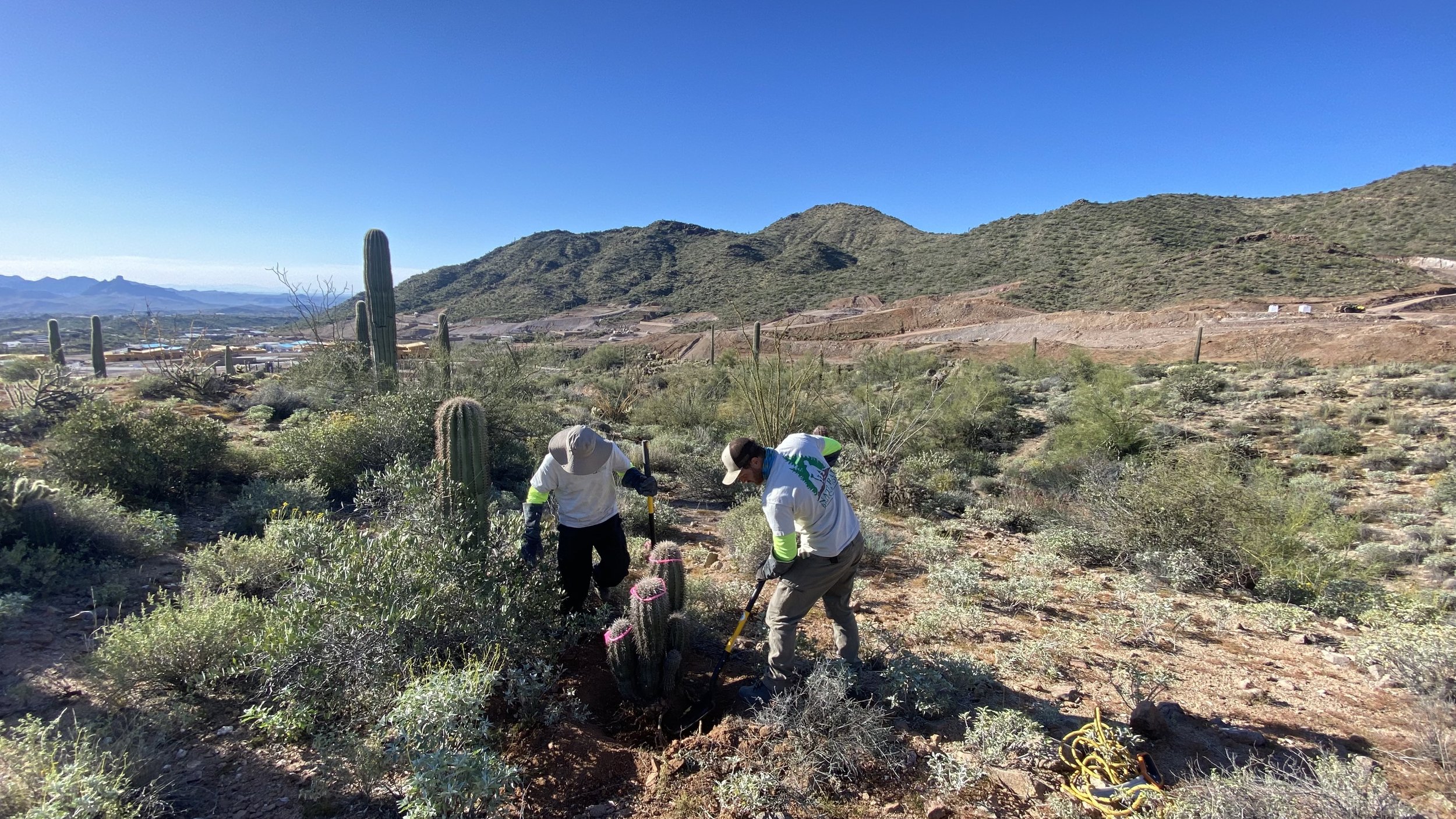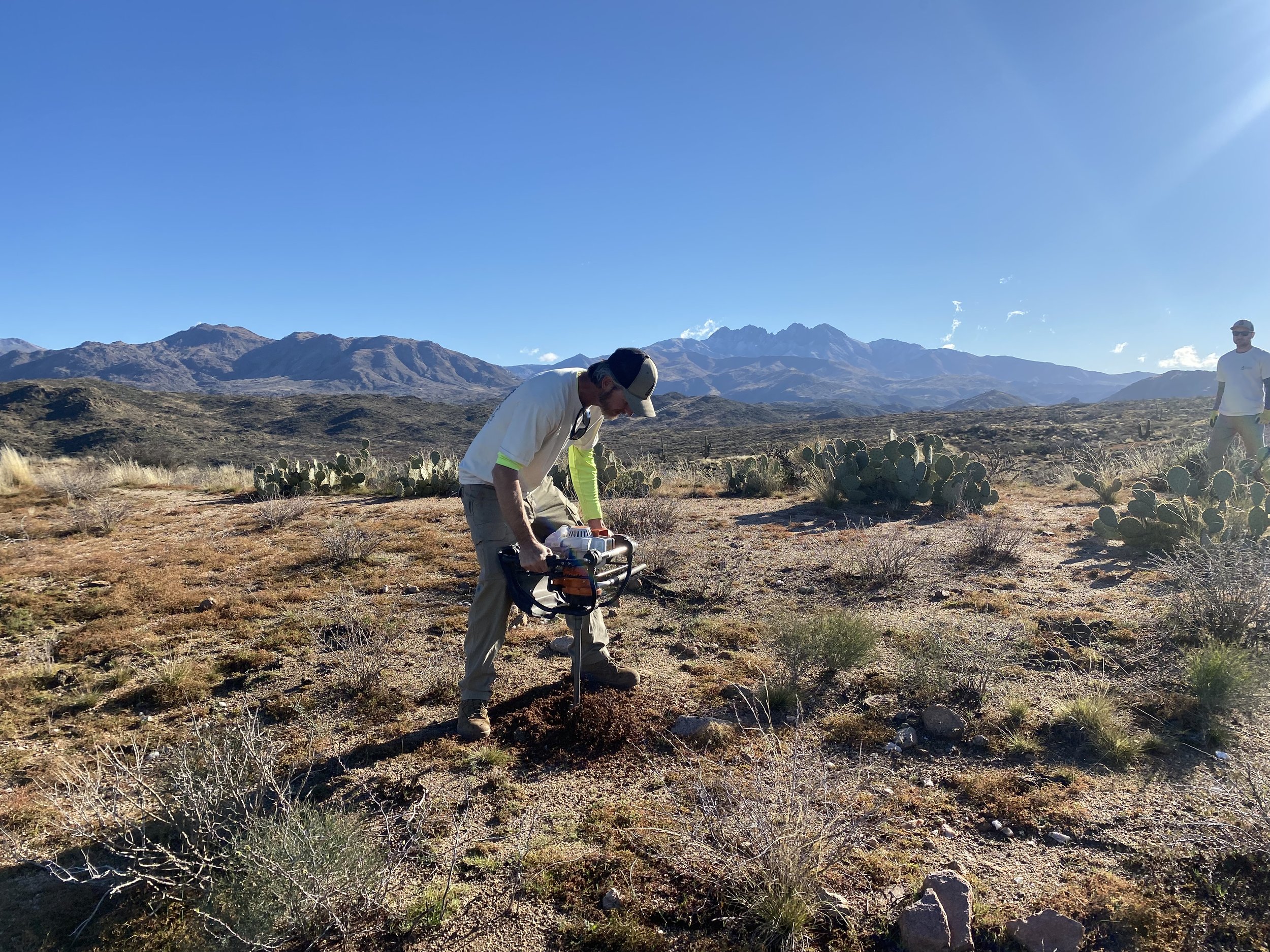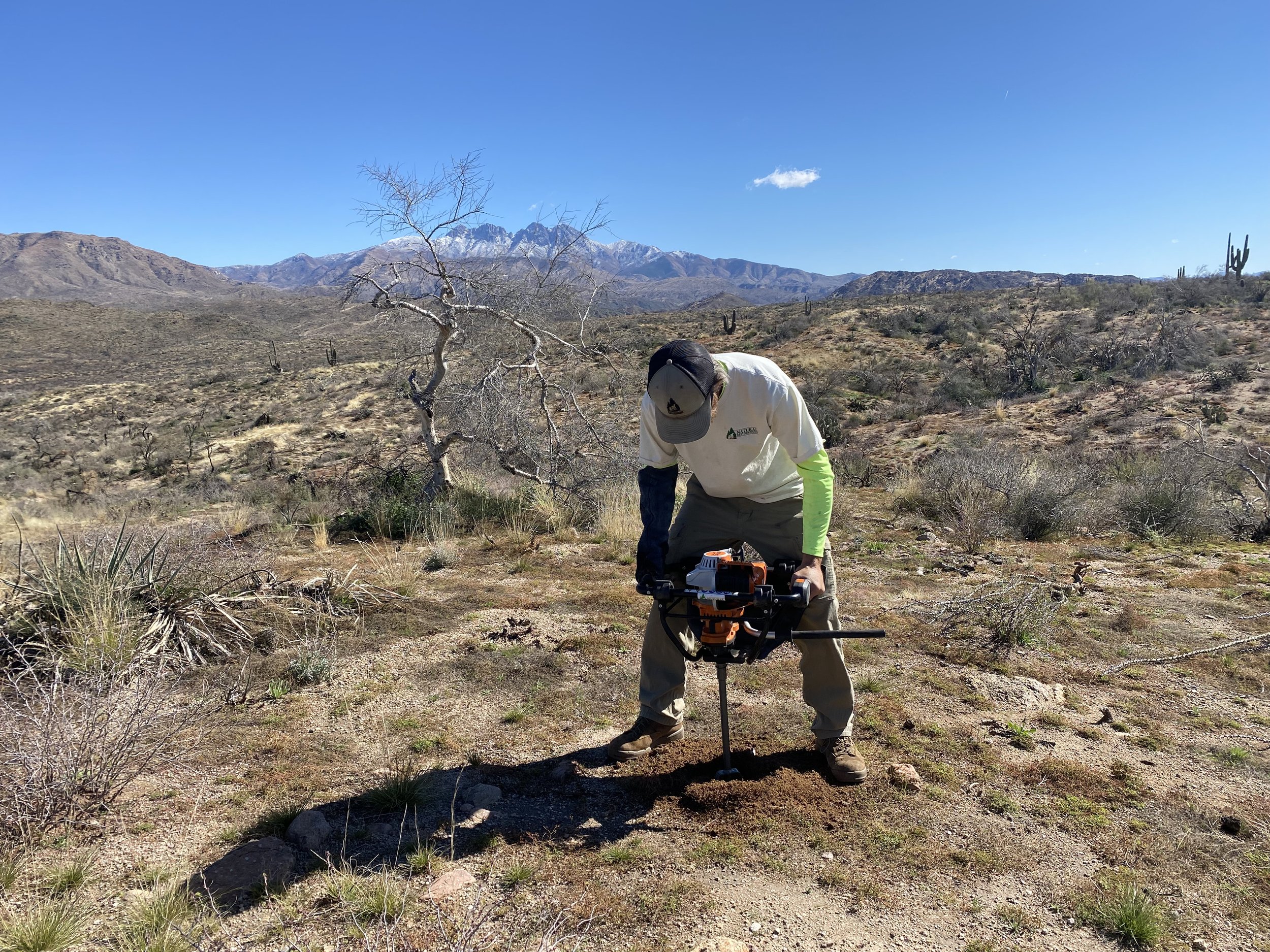OVERLAND EXPO FOUNDATION GRANT
the 2020 Bush Fire
On June 13th, 2020 an individual driving south on SR87 from Payson to Phoenix, noticed their car was overheating and smoke was coming out from underneath. They pulled off the highway to safely inspect the vehicle. However, they pulled onto dry grass and the heat from the brakes sparked the 5th largest wildfire in Arizona history.
Years of extreme drought and increased fuel loads (largely made up of non-native, invasive weeds and shrubs) from the few spring rains carried the flames through 193,455 acres of the Tonto National Forest. It devastated multiple ecosystems at Lower Sycamore and in the Four Peaks Wilderness Area as the fire burned over the top of Four Peaks and back down towards Roosevelt Lake. Unfortunately, most of the fire occurred in the Sonoran Desert, an ecosystem that has not evolved or adapted to wildfires.
With the impact to over 80,000 iconic saguaros, Natural Restorations is dedicated to the long-term efforts to restore and revegetate portions of the Bush Fire burn scar.
672 Cacti collected & saved from destruction
656 cacti replanted in the 2020 bush fire burn scar
saguaro, ocotillo, hedgehog, barrel, prickly pear, teddy bear & staghorn cholla
We are honored to be the first grantee of the Overland Expo Foundation. Through our Overland Expo Foundation grant, we completed two weeks of replanting projects at Four Peaks and Lower Sycamore and hosted a volunteer replanting event at Four Peaks. We collected and saved 672 cacti from destruction and replanted 656 cacti in the 2020 Bush Fire burn scar.
Replanting this burn scar not only improves the appearance of the area, it also improves the usability and safety of the area for the outdoor community. Bringing native plant communities back to these watersheds helps soil stabilization, reduces the effects of erosion caused by water and wind, and wildlife will also benefit from the replanting of their native habitat, providing a healthy ecosystem.
We are grateful to everyone at Overland Expo Foundation for their support of our Replanting Program and their desire to see these iconic views restored!
This grant project consisted of many parts: collecting, transporting, replanting, and monitoring.
COLLECTING: We work with home builders, construction companies, and private land owners to salvage cacti for the burn scar. Our Dedicated Restoration Team salvages saguaros, barrels, hedgehog, ocotillo, prickly pear, & 3 types of cholla with hand tools and transports them from construction sites and private land sites to the burn scar for replanting. We mark the south side of each cacti to ensure we replant them facing south, this gives cacti the best chance of survival and helps prevent sun burn which can kill cacti. We collected 672 cacti!
TRANSPORTING: Once loaded in our trailer and truck bed, we transport cacti to our cacti nursery on the Tonto National Forest for a safe place to store them before replanting.
REPLANTING: Our team transports cacti from our nursery to the Bush Fire burn scar. We unload them, walk them through the burn scar & place them in areas where they will have the best chance of survival. We dig holes, replant them with our markers facing south, and water them.
For the volunteer event, we dug and prepped most of the holes and placed the cacti near the holes for volunteers to replant them. We replanted 656 cacti!
MONITORING: We continue to monitor our replanting areas and water cacti we planted depending on weather conditions.
NAU MONITORING: We teamed up again with the EcoCulture team at NAU to perform ground verification monitoring and aerial surveys of our project areas. They are performing pre-project, post-project, and end-of-the-year surveys to provide a visual analysis to aid with future work.
Thank you to Jenny Vitale, Toll Brothers Arizona, Boyce Thompson Arboretum, & several private land owners for everything they did to help make this project possible! We are grateful for the opportunity to legally to collect, transport and replant cacti that would have otherwise been destroyed during the construction process. Thank you to everyone from the Tonto National Forest - Mesa Ranger District for all of their help and support of this project!
Do not take cacti, trees, or plants from construction sites, private land or public land. We go through a lengthy process to ensure we are legally allowed to collect, transport, and replant.
Check out all of the pictures from this grant project below.
Four Peaks
Prepping the burn scar for a volunteer replanting event
In addition to our Dedicated Restoration Team replanting at Four Peaks, we also needed to prep the area for the Four Peaks Replanting Event we hosted on 02/19/22. Our team collected cacti from several construction and private land sites, transported them to Four Peaks, unloaded and moved each cactus to it’s new home where it will have the best chance of survival, and dug holes with augers and pick axes to get the appropriate size and depth hole, and then saved the rest of the process for the volunteer event.
Keep scrolling down to see photos from the volunteer event and our team replanting at Four Peaks & Lower Sycamore on the Tonto National Forest.
BEFORE
AFTER
BEFORE
AFTER
BEFORE
AFTER
BEFORE
AFTER
BEFORE
AFTER
BEFORE
AFTER
BEFORE
AFTER
BEFORE
AFTER
BEFORE
AFTER
Click HERE to view additional photos from this PRoject
Lower Sycamore
replanting the desert to prevent new roads & parking areas
As a result of the 2020 Bush Fire, people started blazing their own trails in areas previously covered in vegetation. They began taking their trucks and OHV’s into desert areas that were previously blocked by saguaros, ocotillo, hedgehog, barrel, prickly pear and teddy bear and staghorn cholla.
In a short period of time the area no longer looked natural and people were driving farther and farther into the desert, causing more damage and destruction. The area quickly started to look like another road with a parking area. The U.S. Forest Service Tonto National Forest quickly recognized the problem and put a fence up to prevent additional damage as we prepared for replanting.
Our Dedicated Restoration Team replanted the area at Lower Sycamore during this grant project. We planted the most difficult and painful to move through cacti closest to the road; teddy bear and staghorn cholla. Our hope is that cholla will discourage anyone from trying to cut the fence and cause more damage to the desert. We moved farther away from the road with ocotillo, hedgehog, and barrels. We placed saguaros farther away from the road to provide more protection from people and vehicles.
BEFORE
AFTER
BEFORE
AFTER
BEFORE
AFTER
BEFORE
AFTER
BEFORE
AFTER
BEFORE
AFTER
BEFORE
AFTER
BEFORE
AFTER
BEFORE
AFTER
BEFORE
AFTER
BEFORE
AFTER
BEFORE
AFTER
BEFORE
AFTER
BEFORE
AFTER
BEFORE
AFTER
BEFORE
AFTER
Click HERE to view additional photos from this PRoject
02/19/22 Four Peaks Replanting volunteer event
87 volunteers, including 17 youth volunteers, joined us on Saturday, February 19th for a Bush Fire Burn Scar Replanting, Trash Cleanup, & Invasive Species Removal at Four Peaks on the Tonto National Forest.
Volunteers helped us replant a section of the 2020 Bush Fire burn scar with 145 saguaros, ocotillo, hedgehog, barrel, prickly pear, & staghorn cholla. Volunteers spread 198 packs of Sonoran Desert WildFlower seed mix packs donated by SWCA Environmental. Volunteers also removed 297 pounds of trash & 2 tires from the replanting area and 12 volunteers helped remove 100’s of bunches of buffelgrass, an invasive & non-native weed, from the burn scar with Friends of the Tonto National Forest.
Restorating a burn scar goes beyond putting cacti in the ground, we have to look at the big picture and take action to remove invasive plants and trash that can be fuel for fires.
Click HERE to view the entire Volunteer replanting event
This event was part of our long-term Bush Fire Burn Scar Replanting Project on the Tonto National Forest and was possible through grant funding from the Overland Expo Foundation, grant funding from the Secure Rural Schools Program Title II Special Projects on Federal Lands through the Southern Arizona Resource Advisory Committee and the U.S. Forest Service Tonto National Forest, & a Local Artist, Local Causes Visa® debit card giveback program donation from Arizona Federal Credit Union.
Watering cacti in the desert
Watering cacti is not only valuable in providing initial water to reduce transplant shock, it also aids in compacting the soil around the freshly planted root network. We did not need to water at this event because it rained several days before the event and several days after the event. We will continue to monitor the area and water as needed if we do not get sufficient rain.
Collecting
Where do the cacti come from?
The cacti for this replanting project are provided for free when our team digs them up and transplants them from several Phoenix Valley construction and private land sites where they would have been destroyed during construction. We mark the south side of each cacti to ensure we replant them facing south, this gives cacti the best chance of survival and helps prevent sun burn which can kill cacti.
